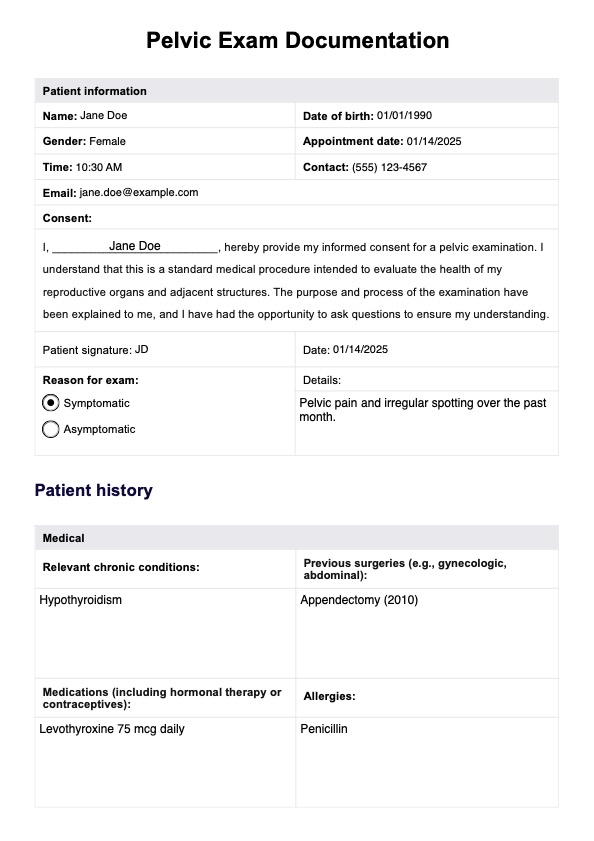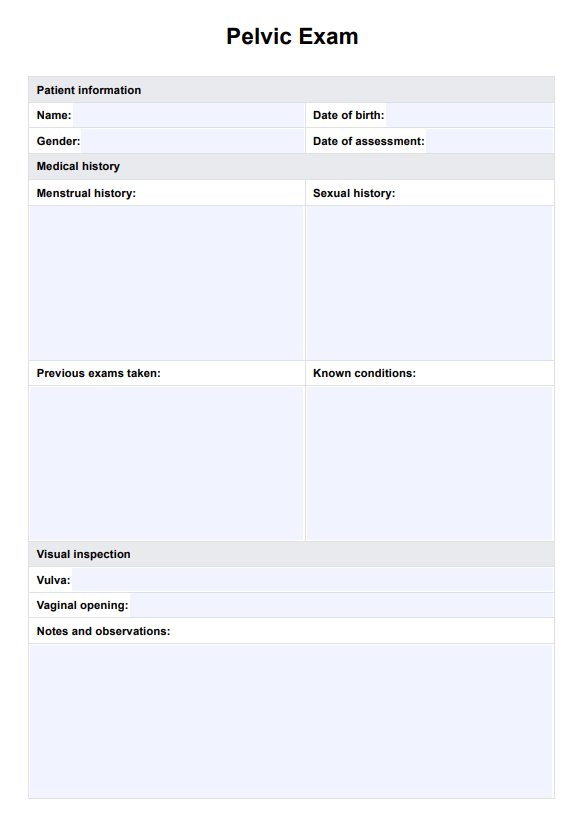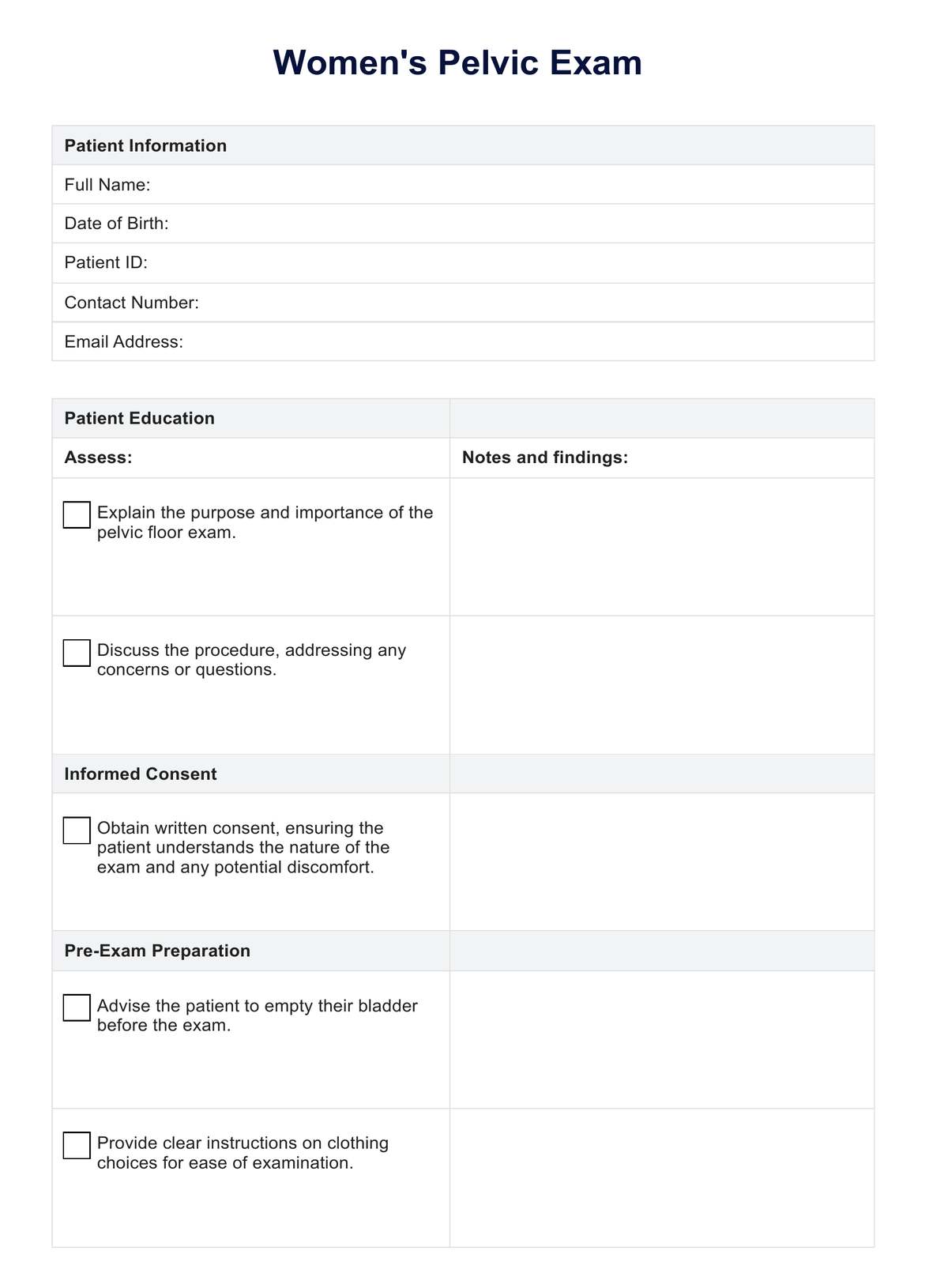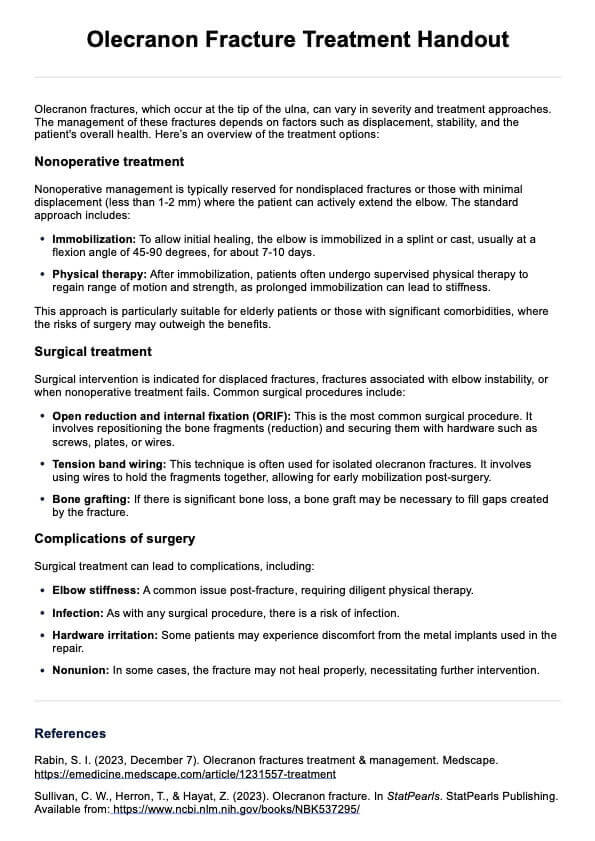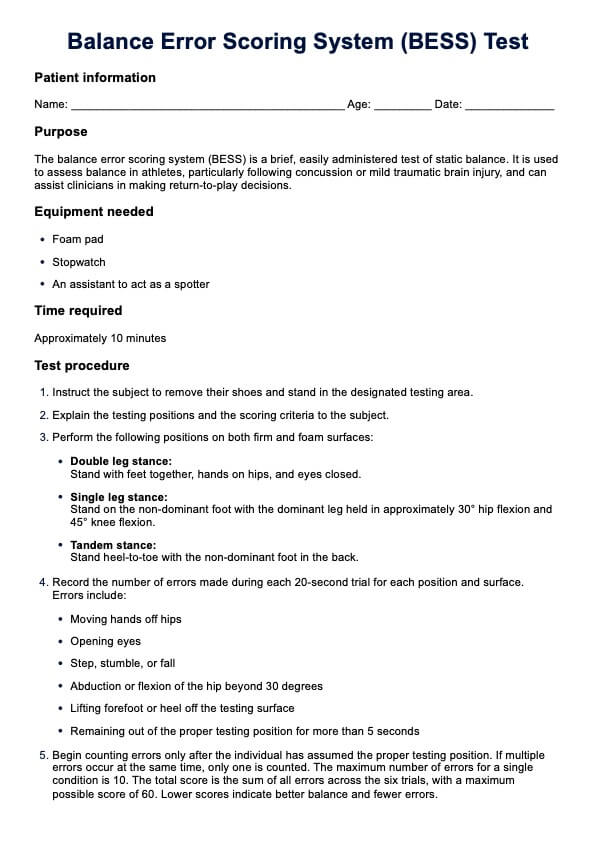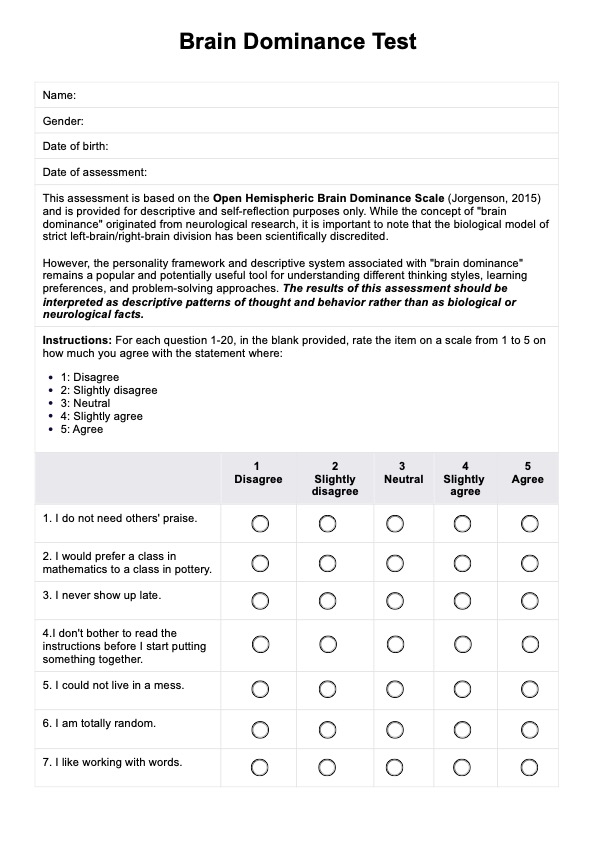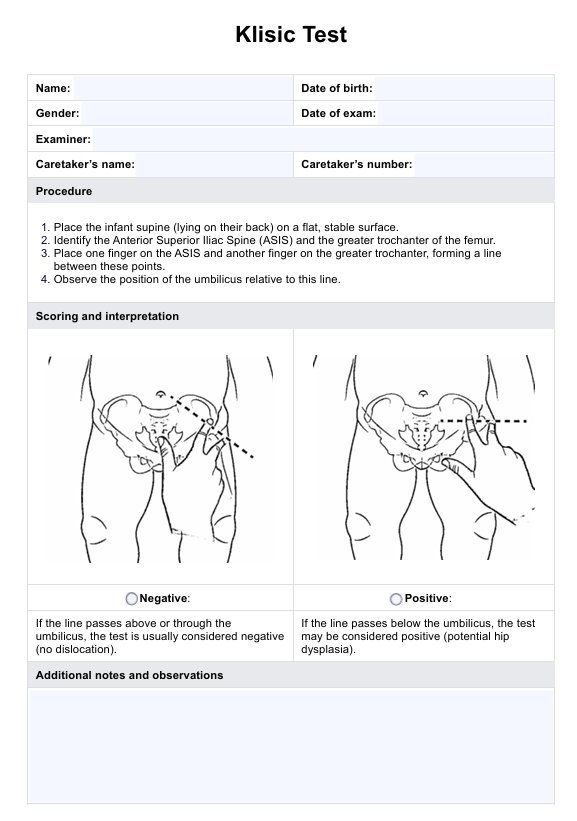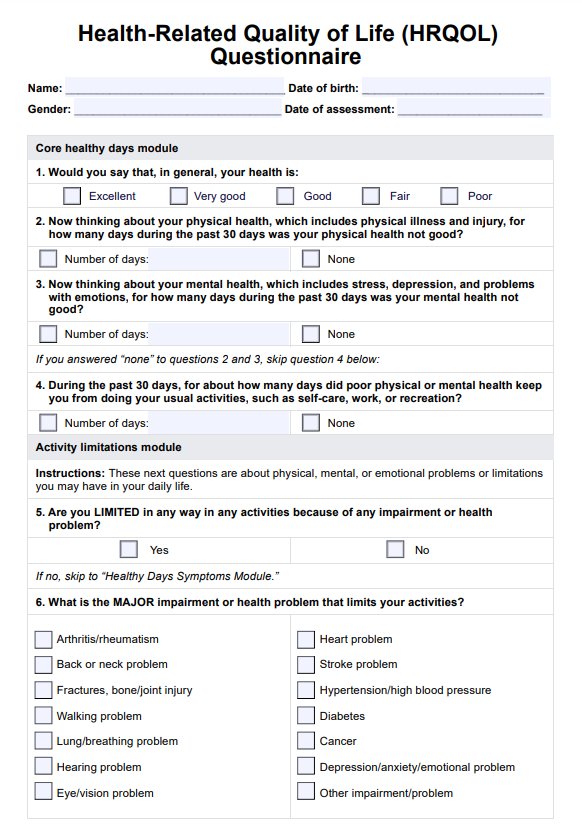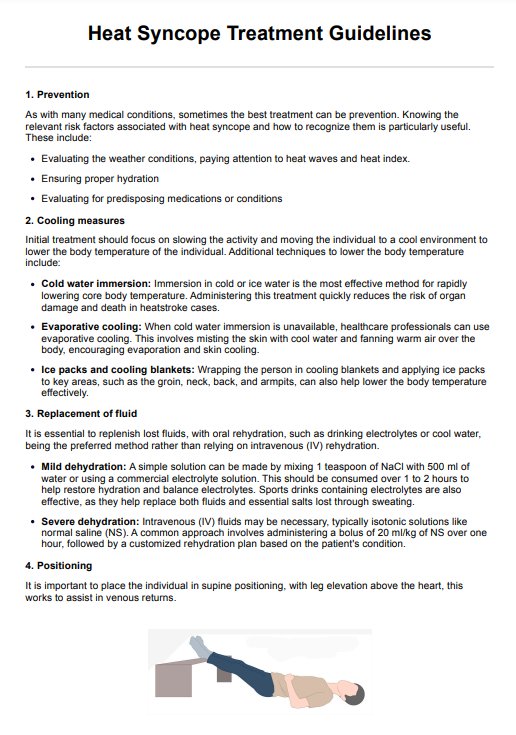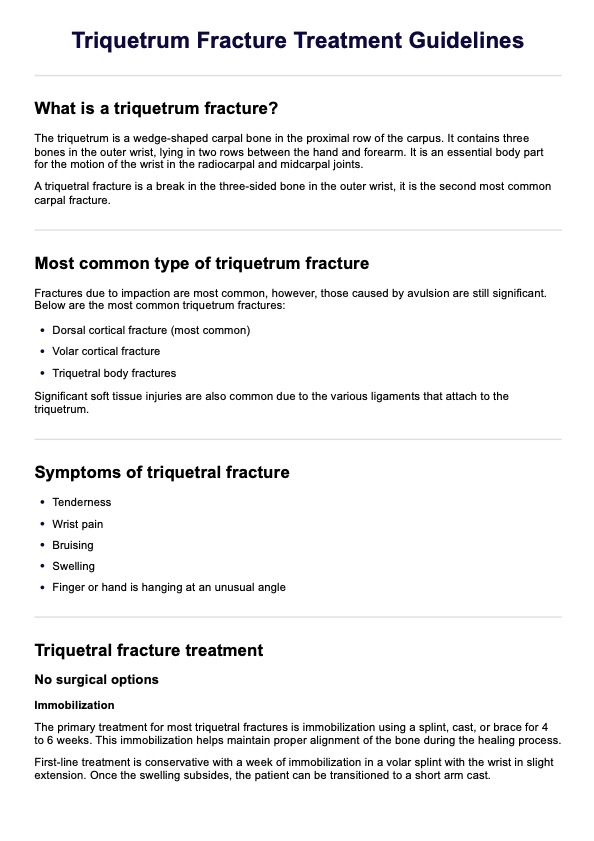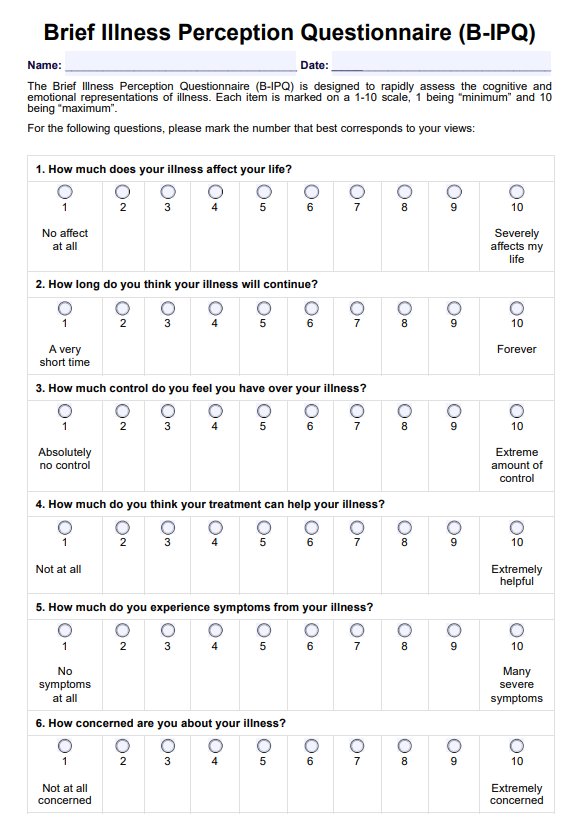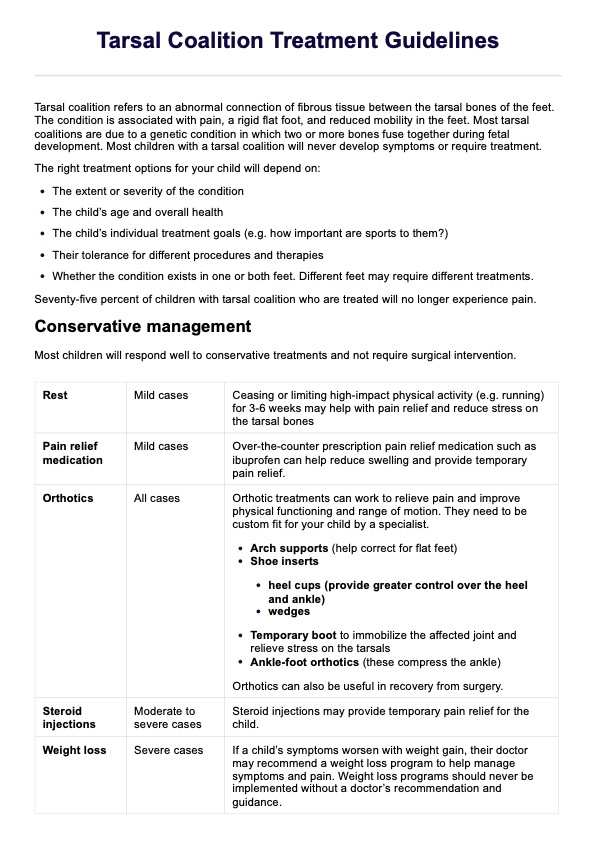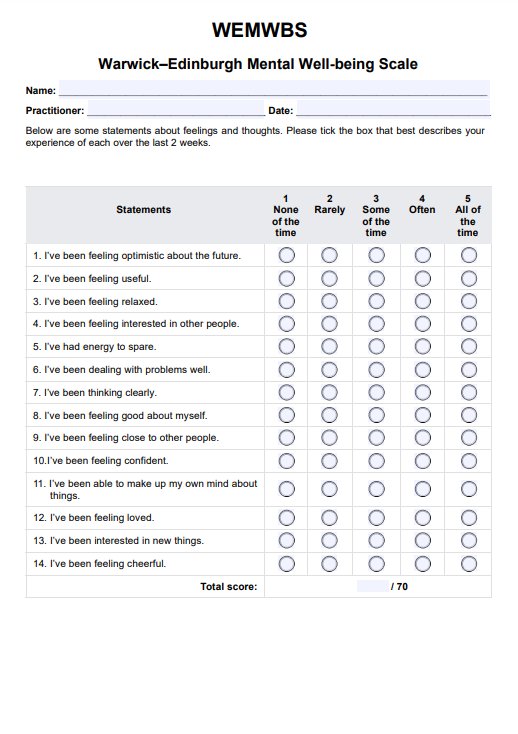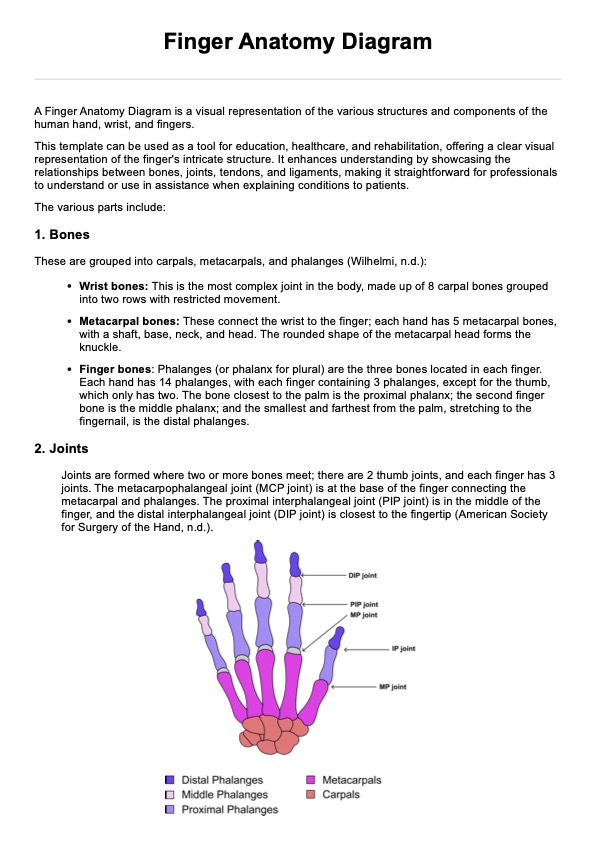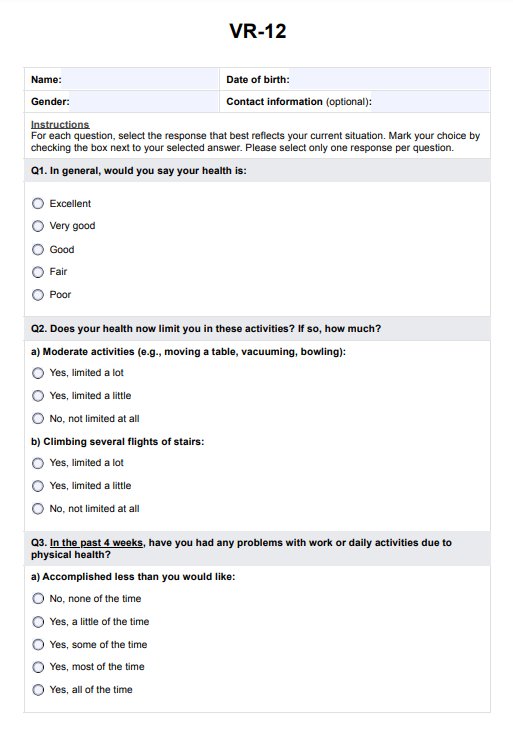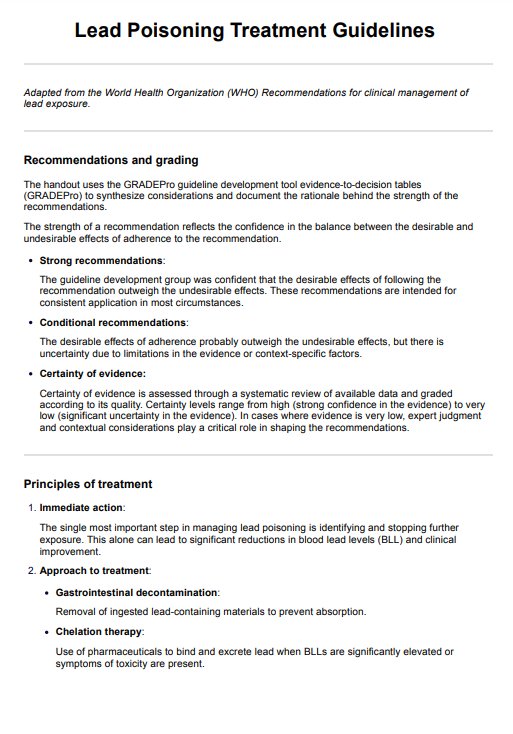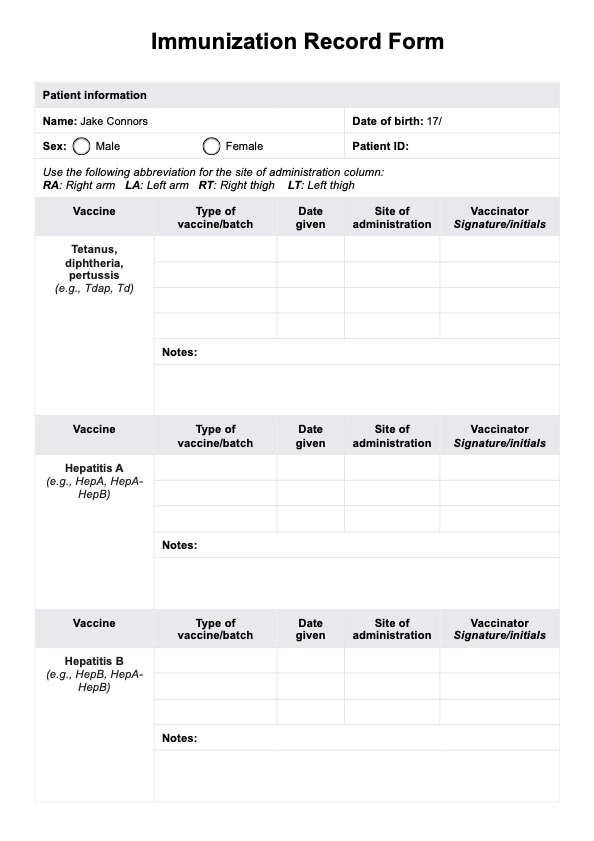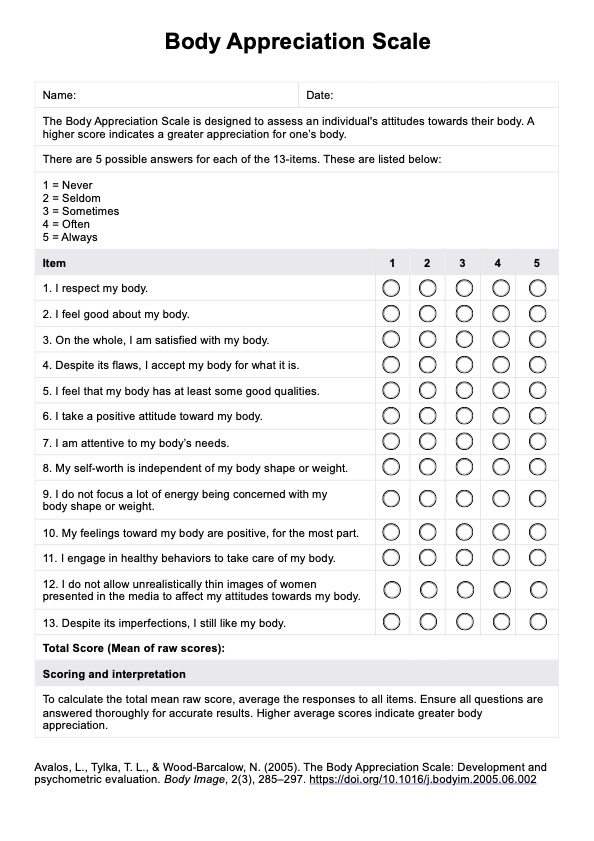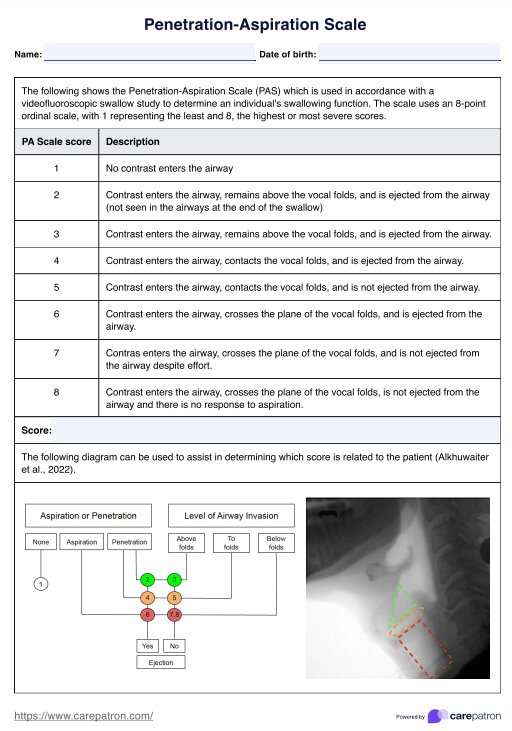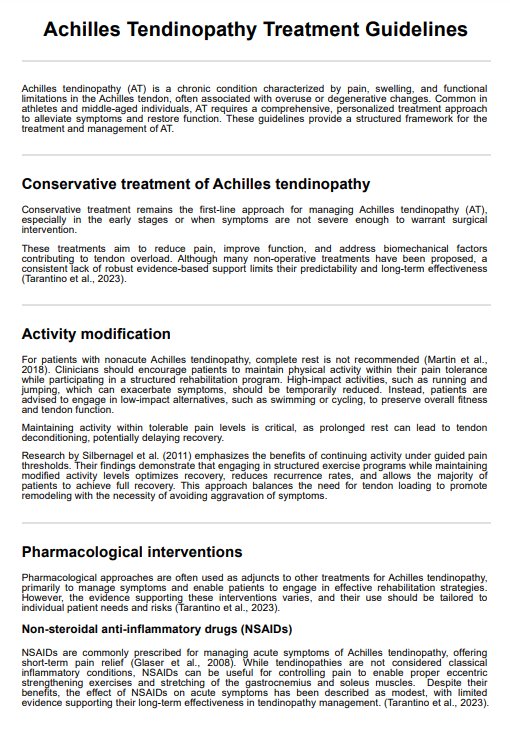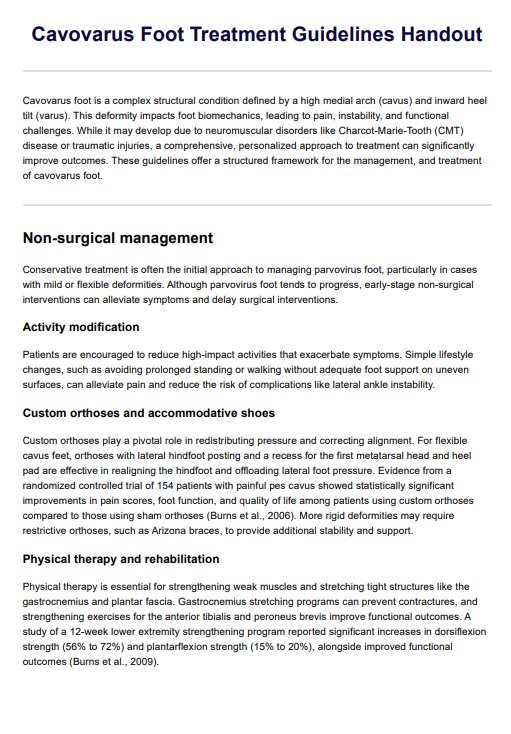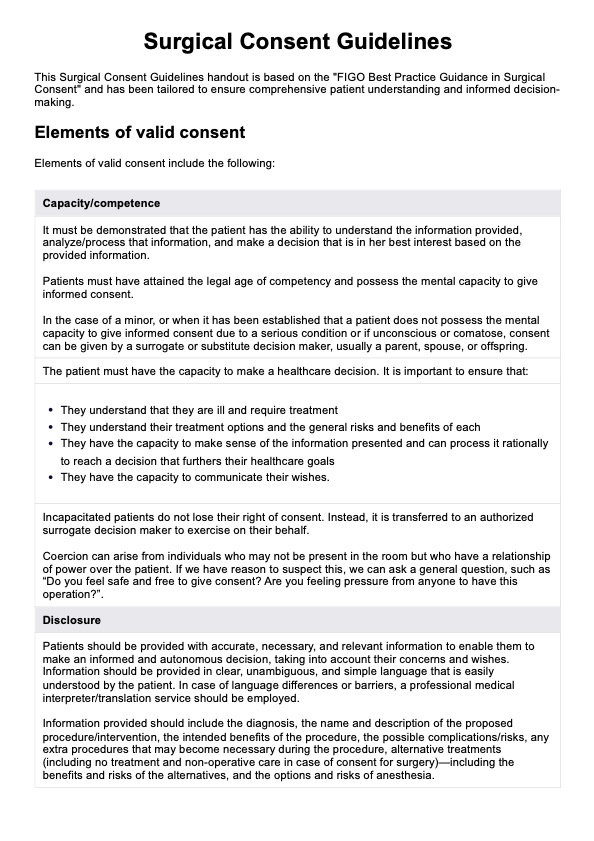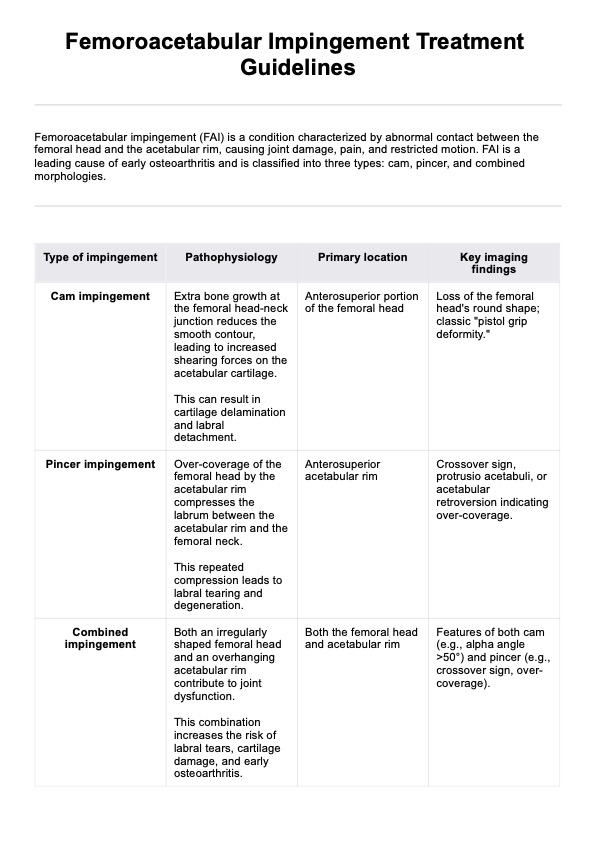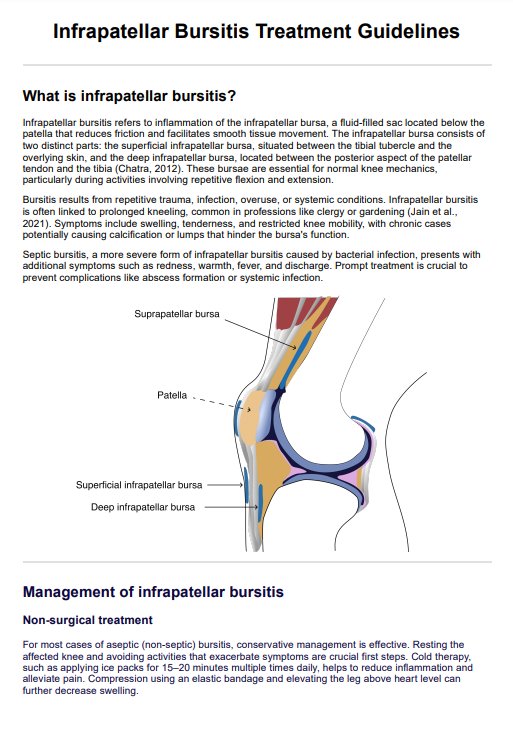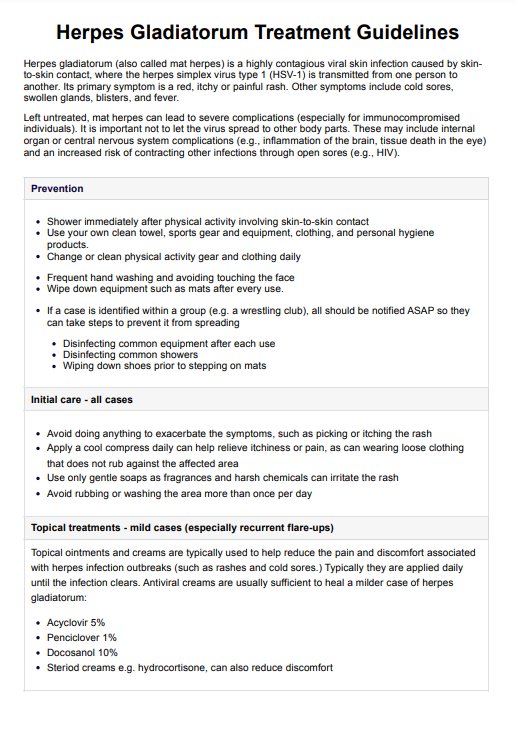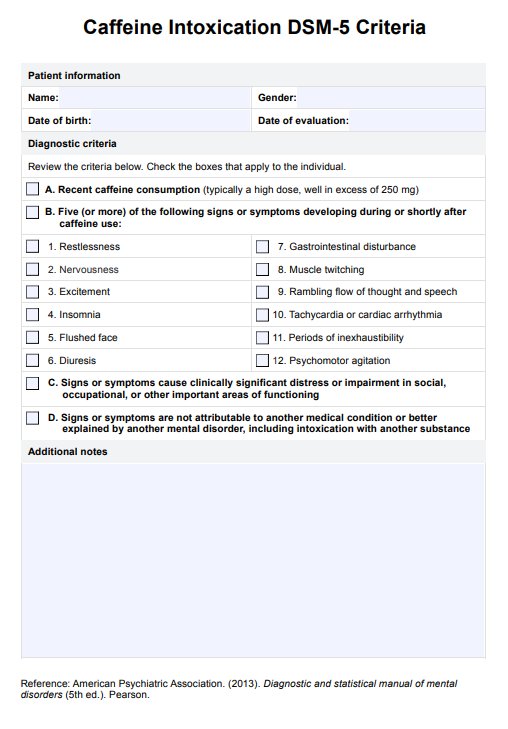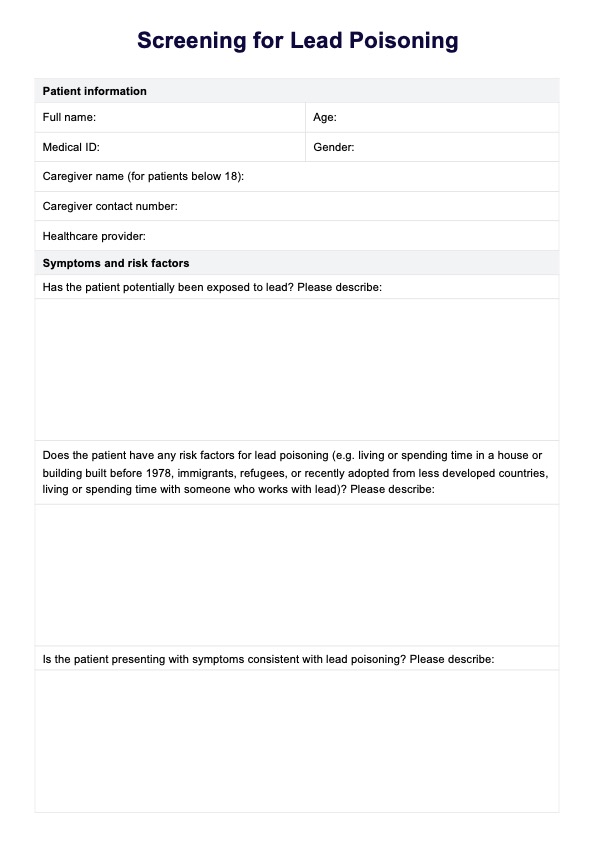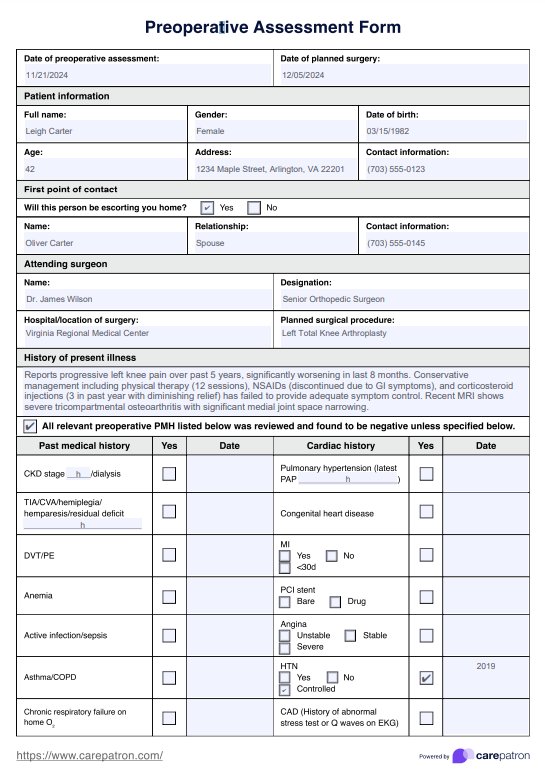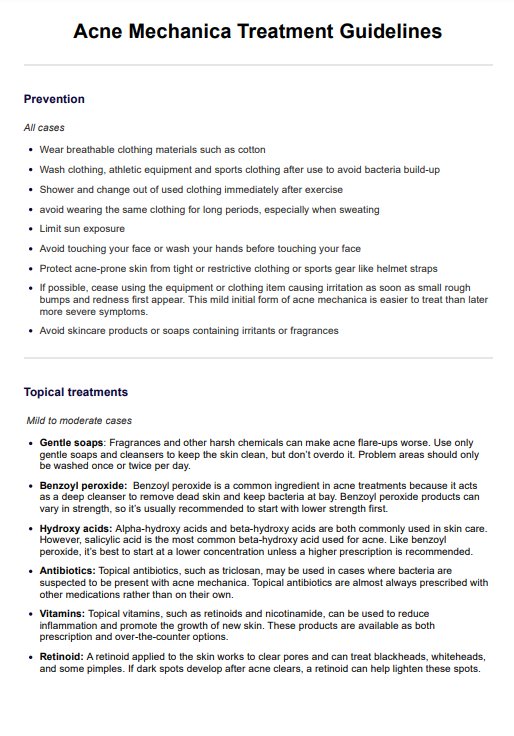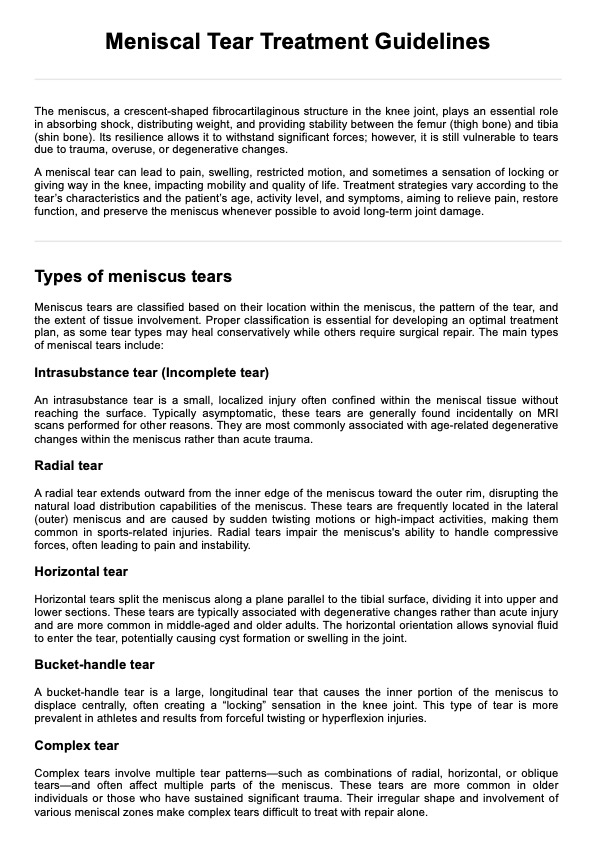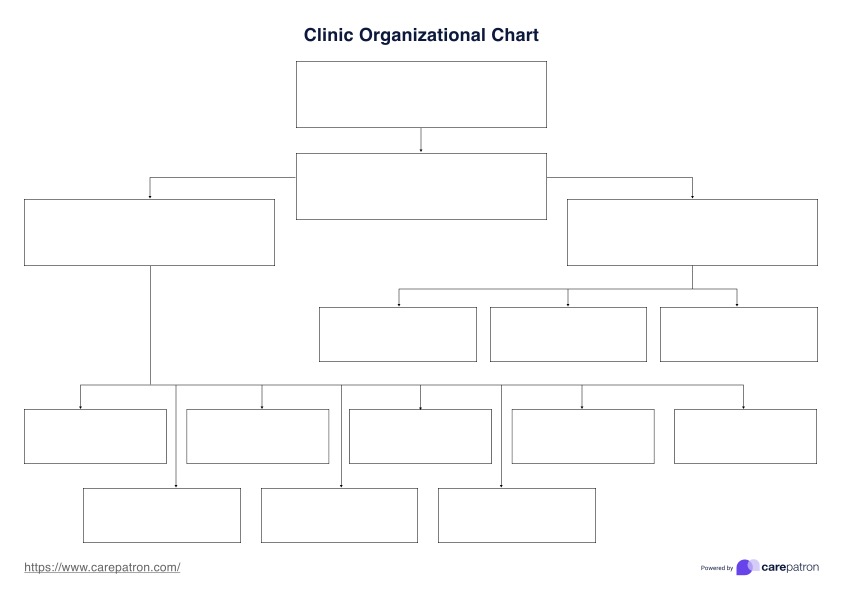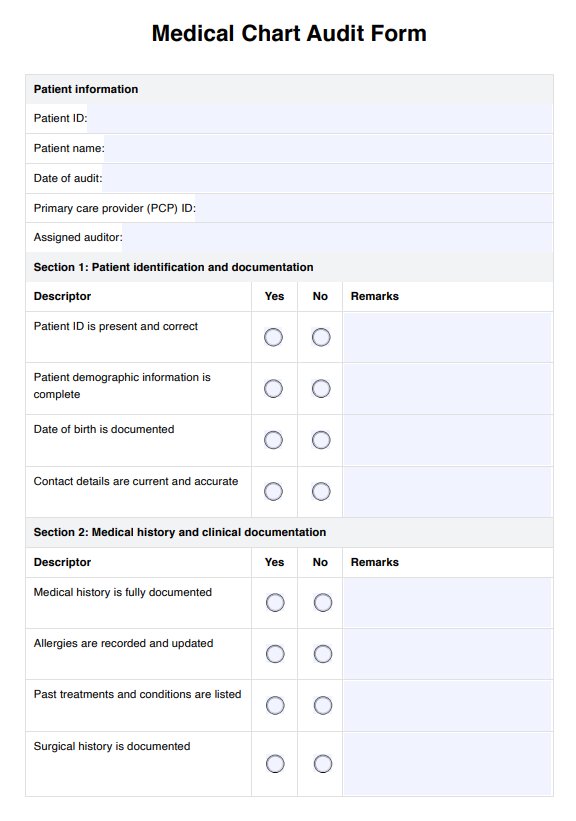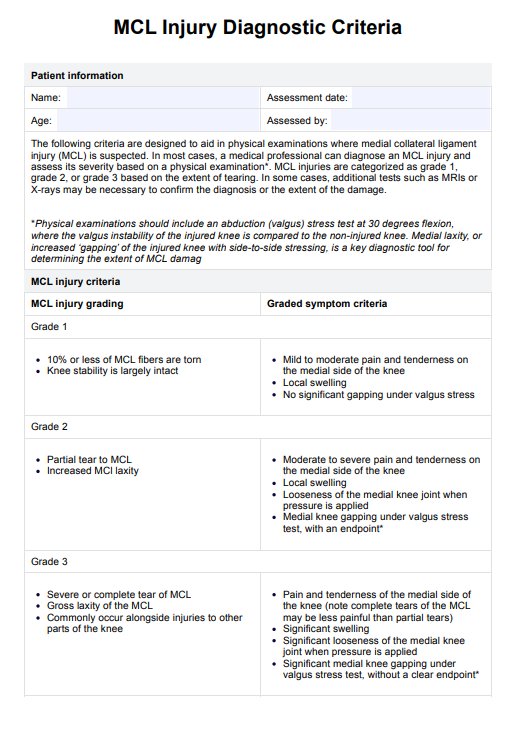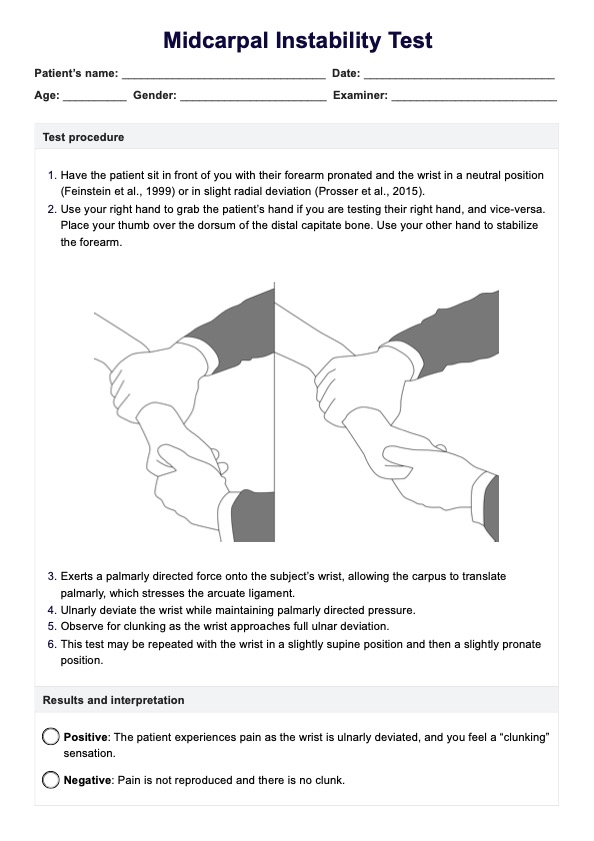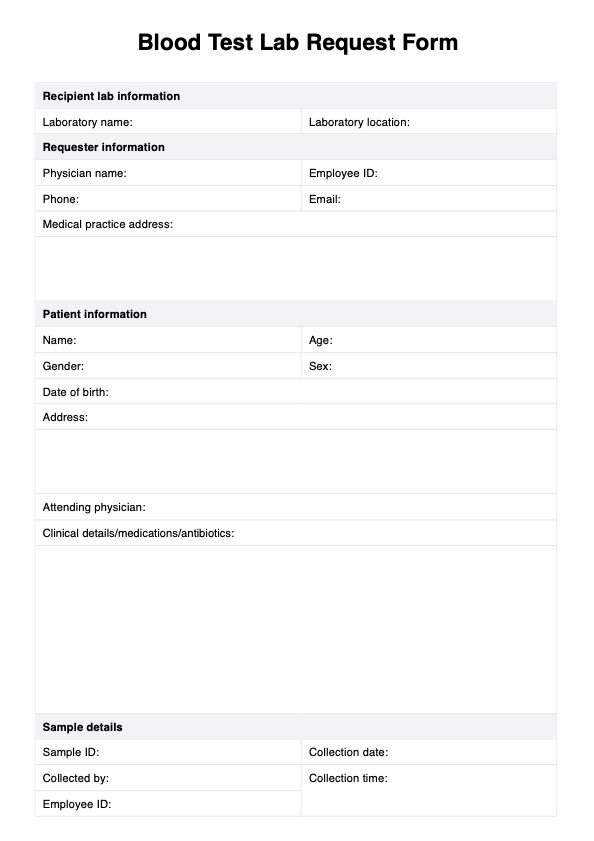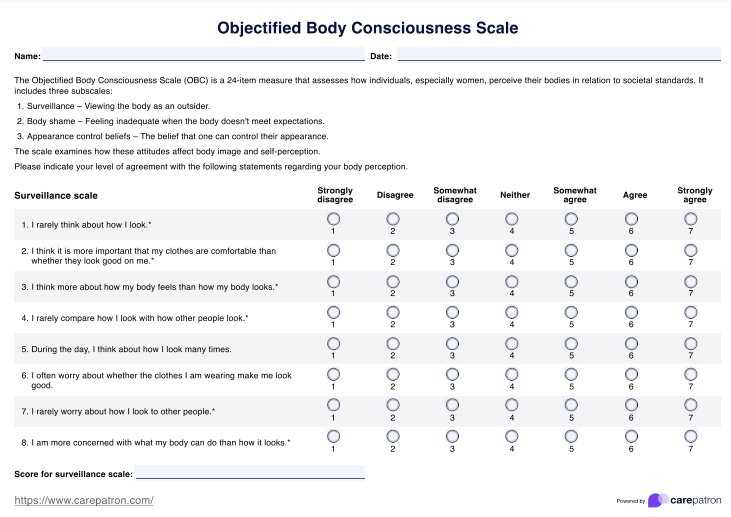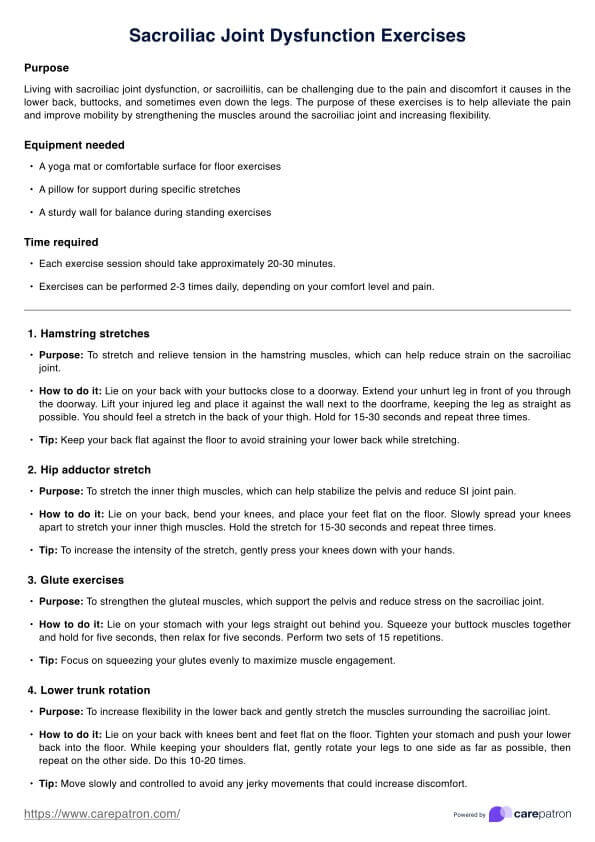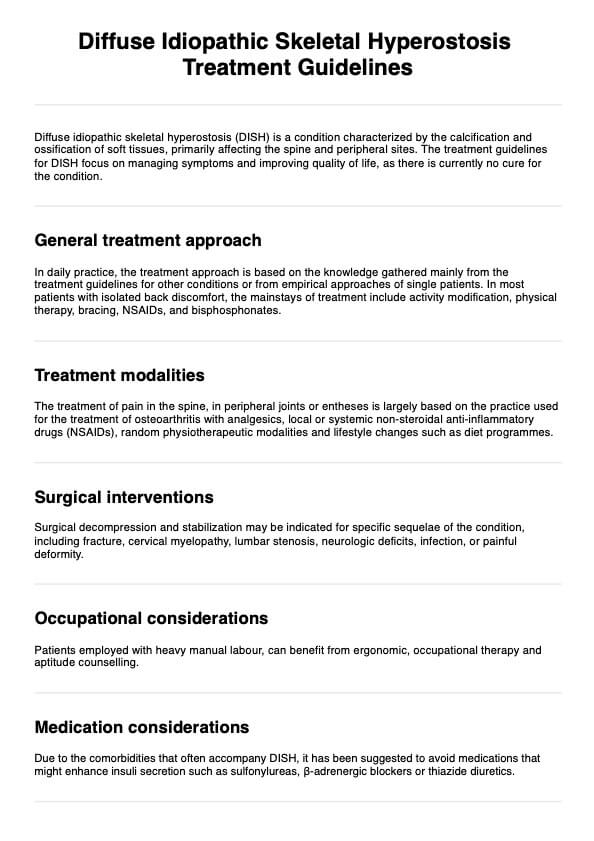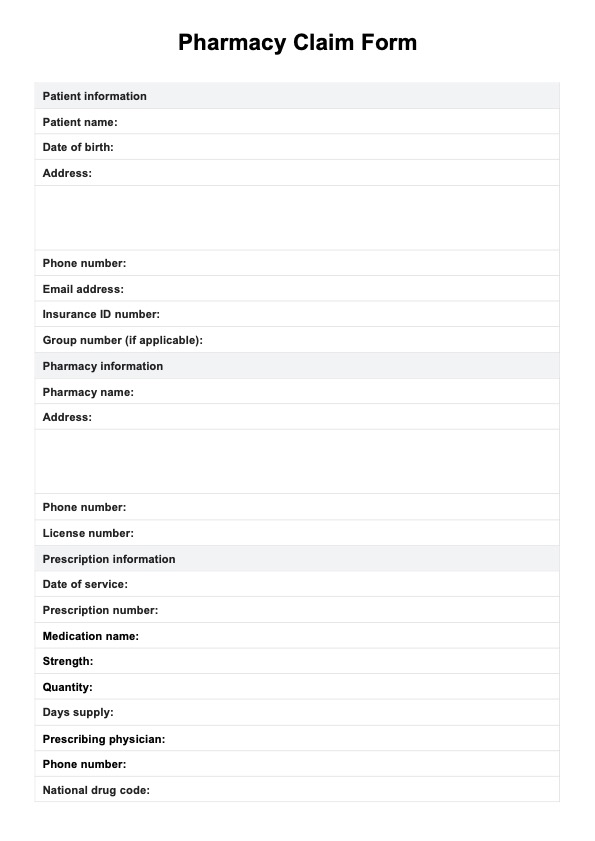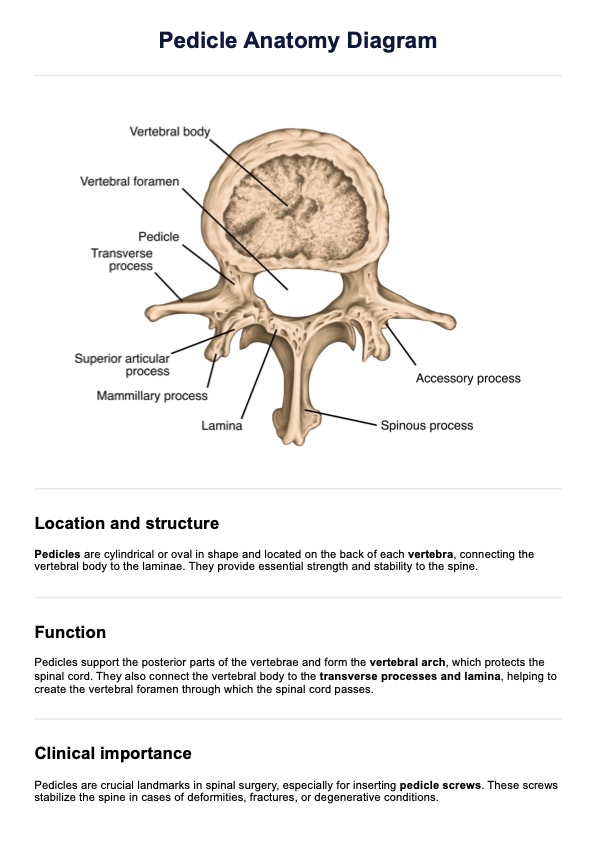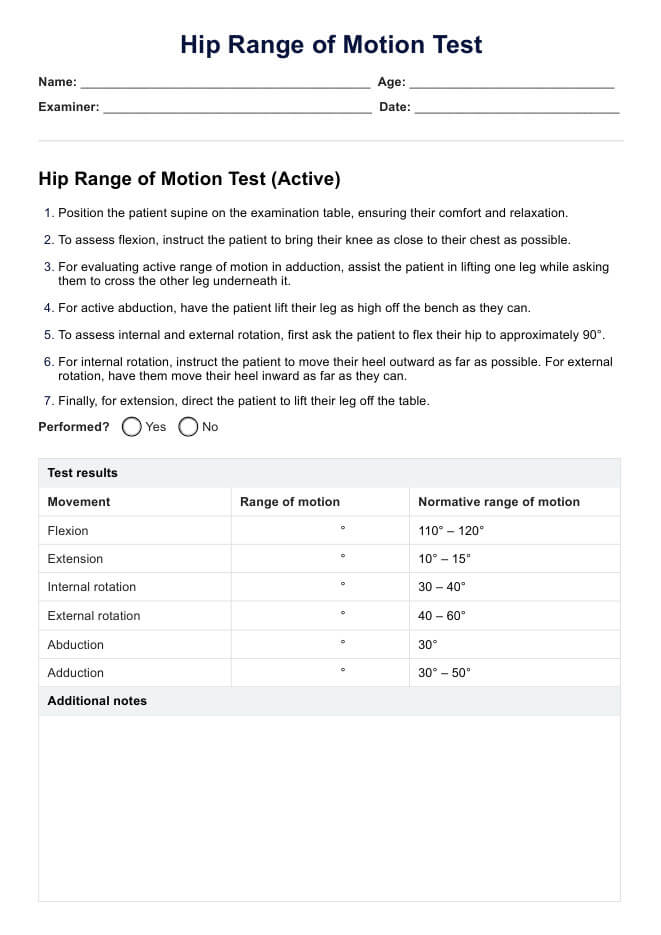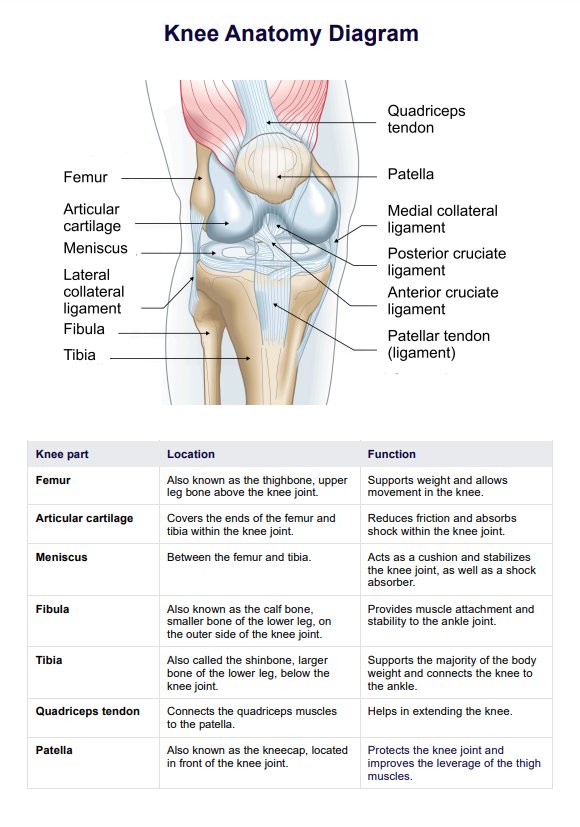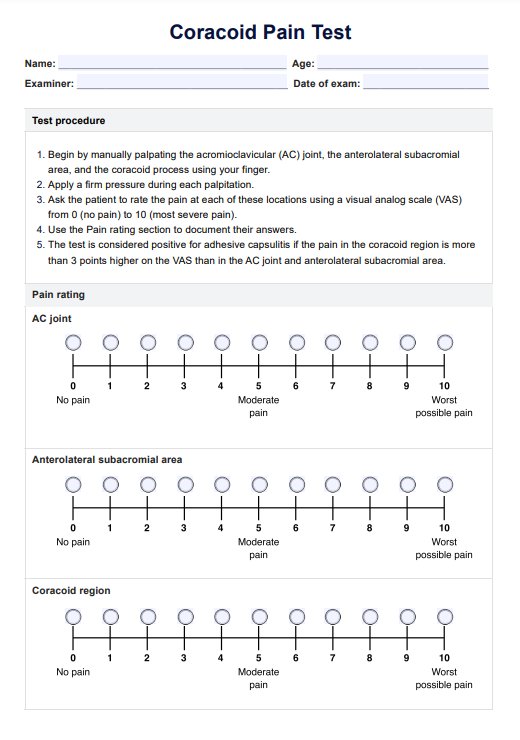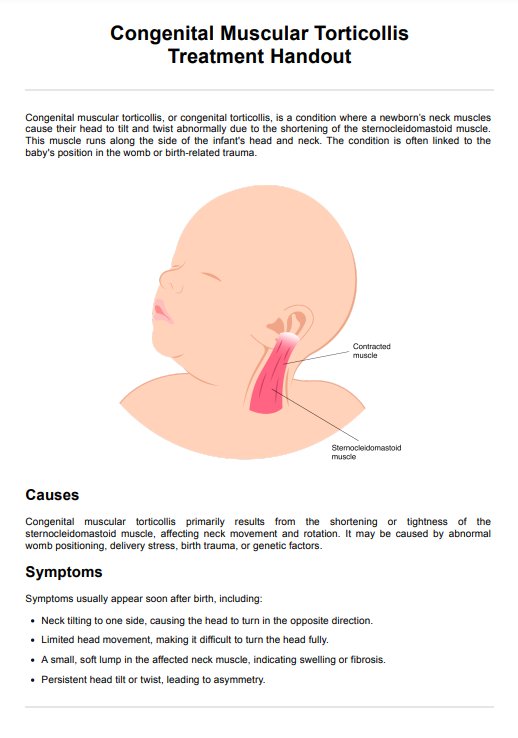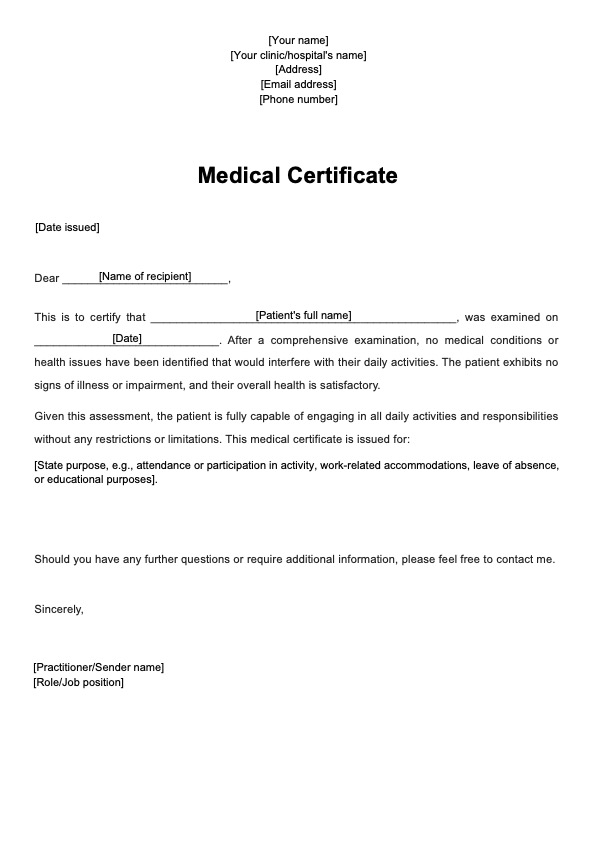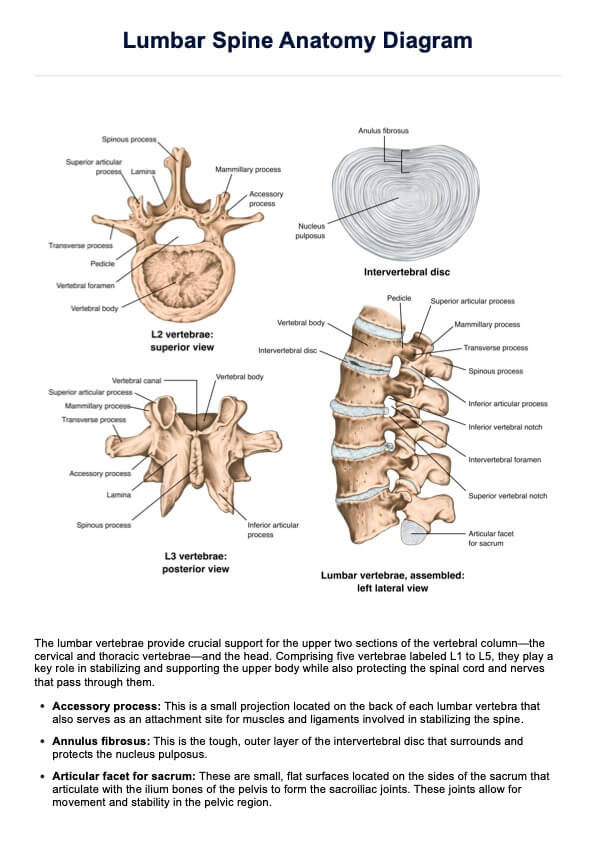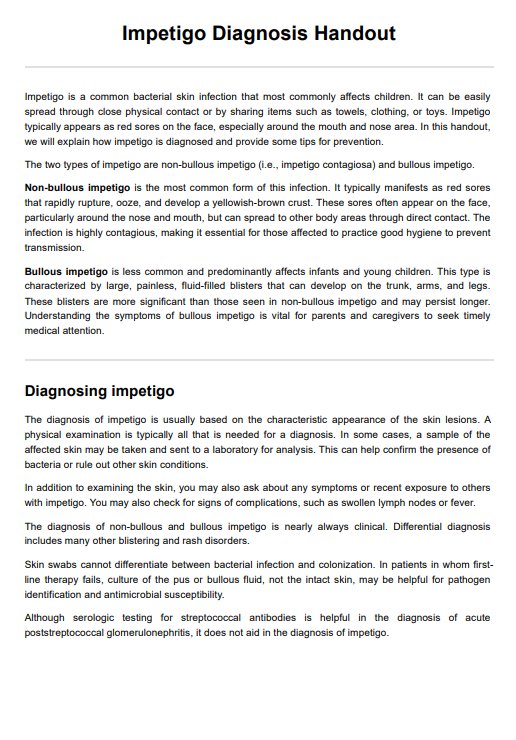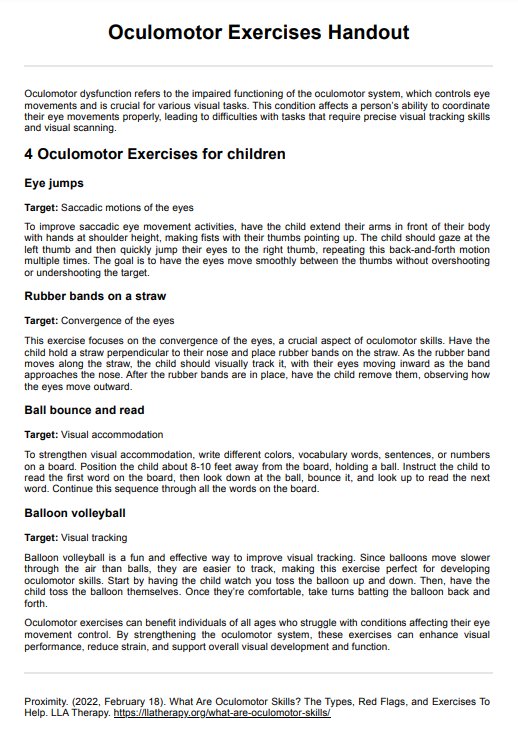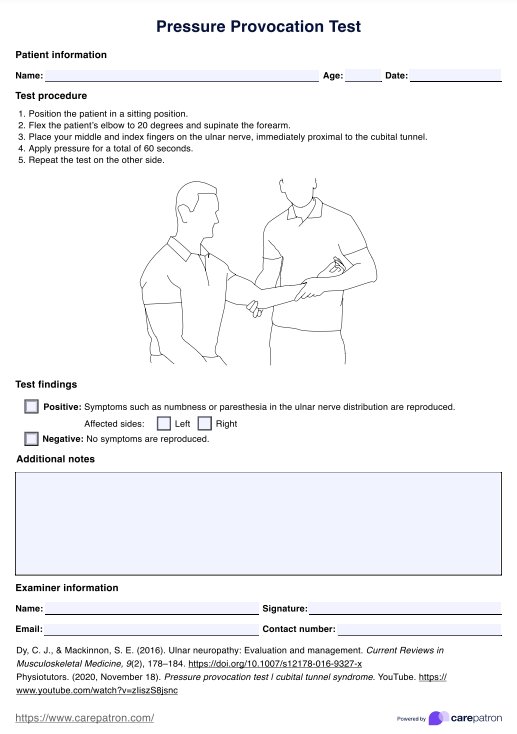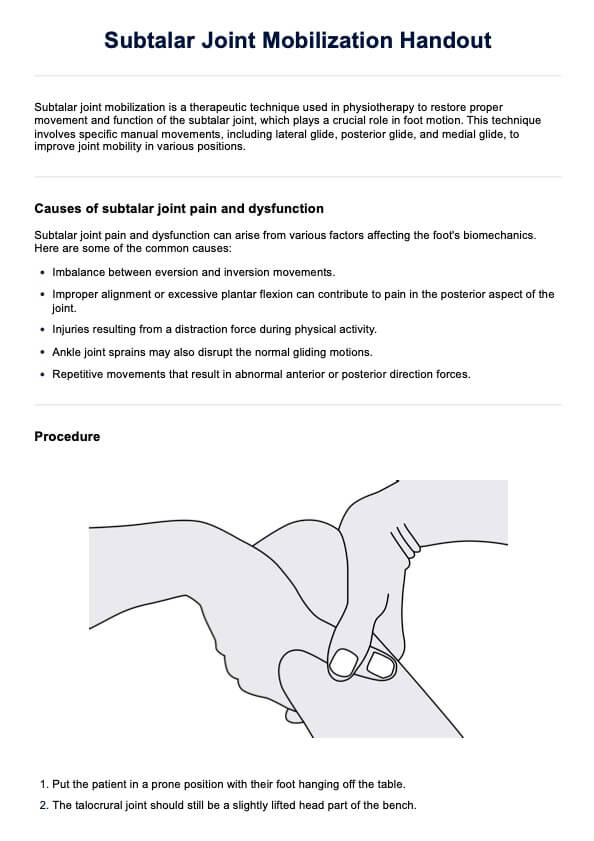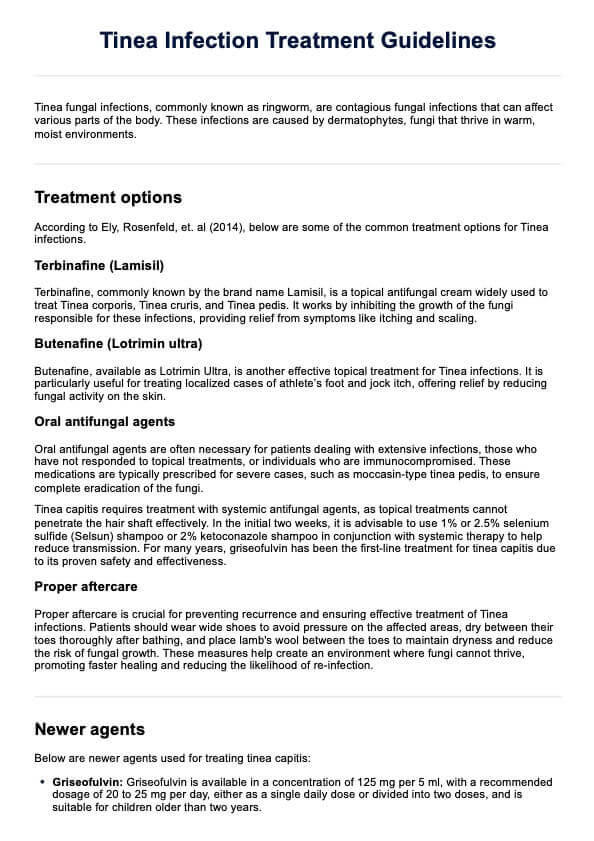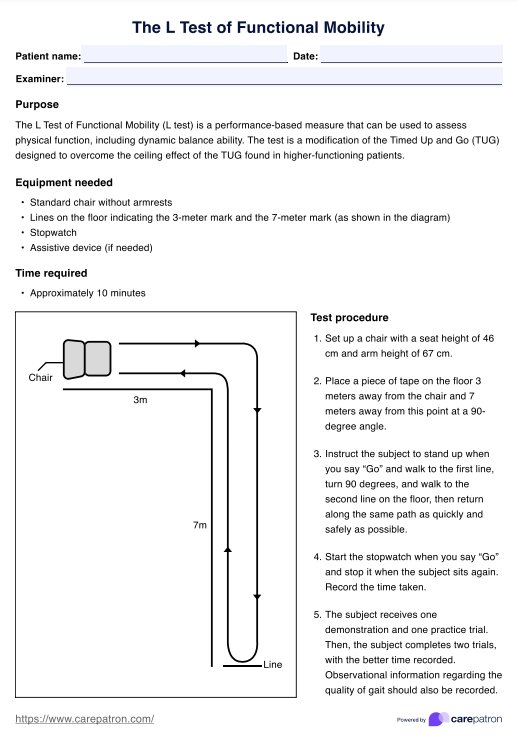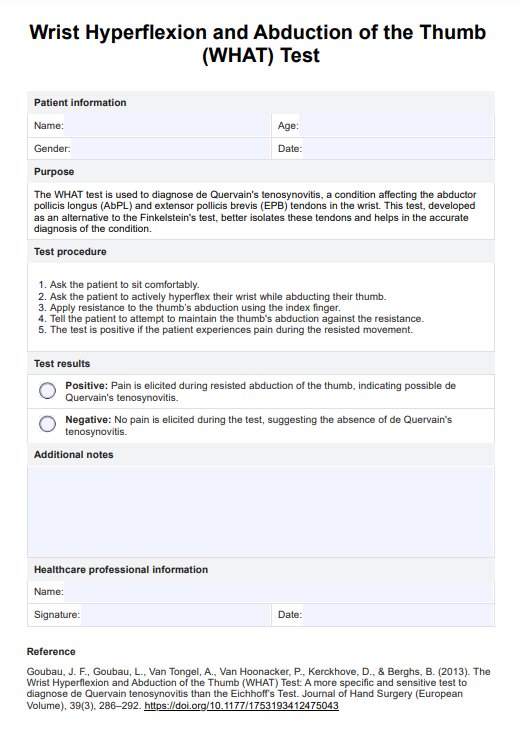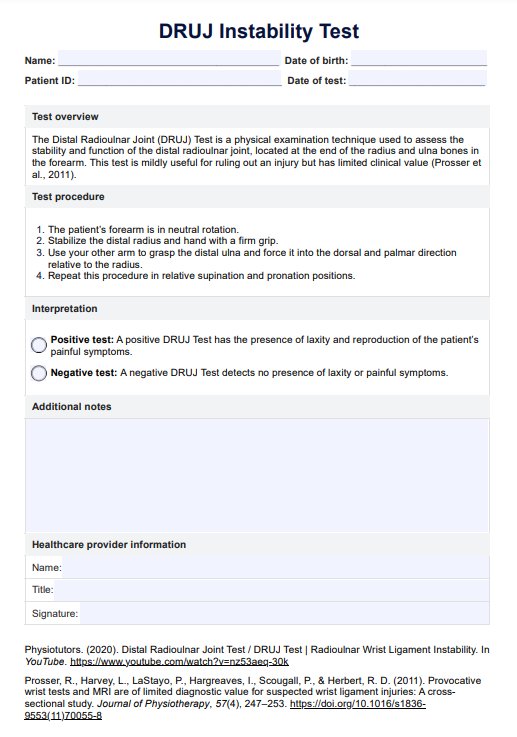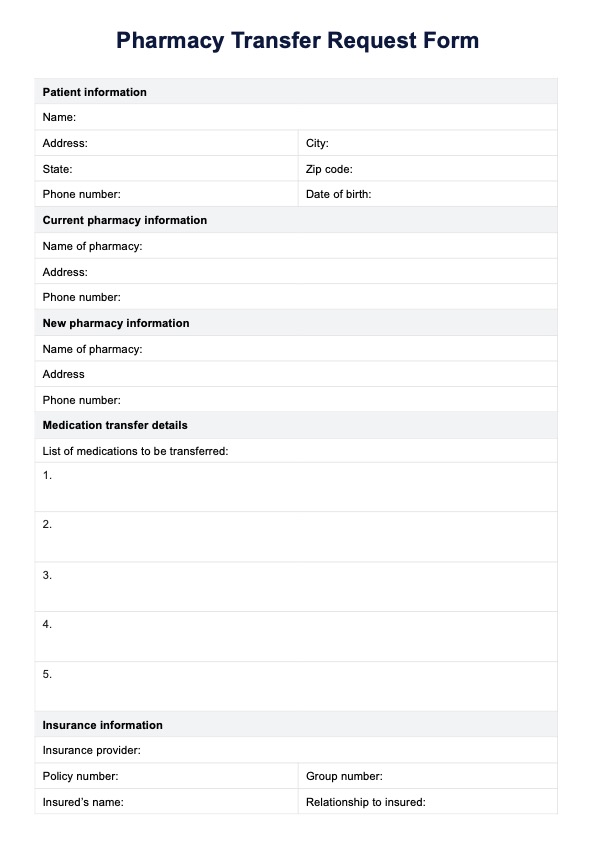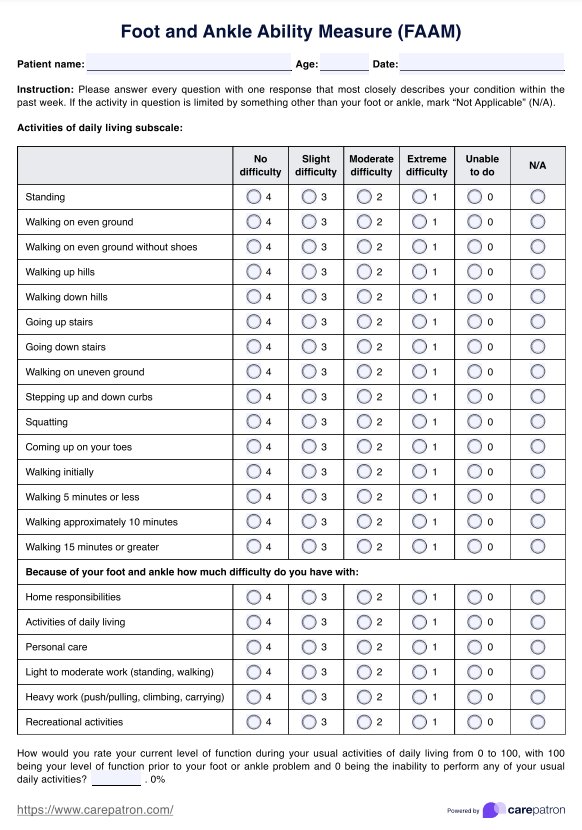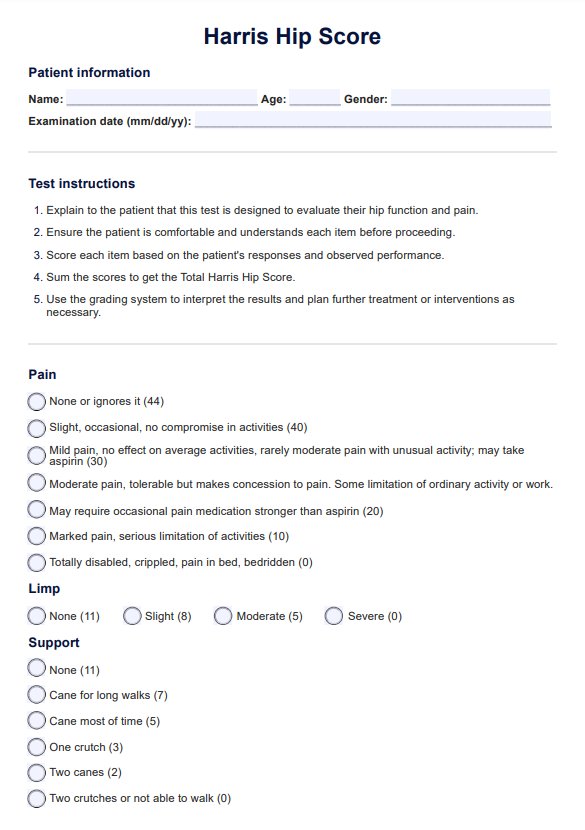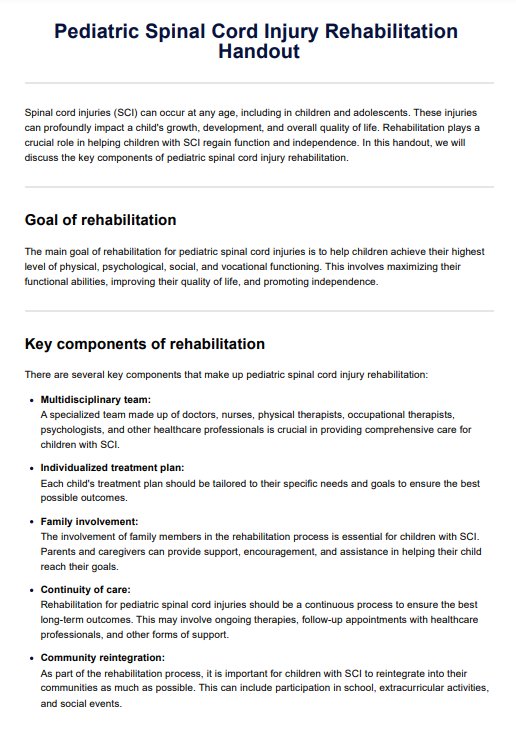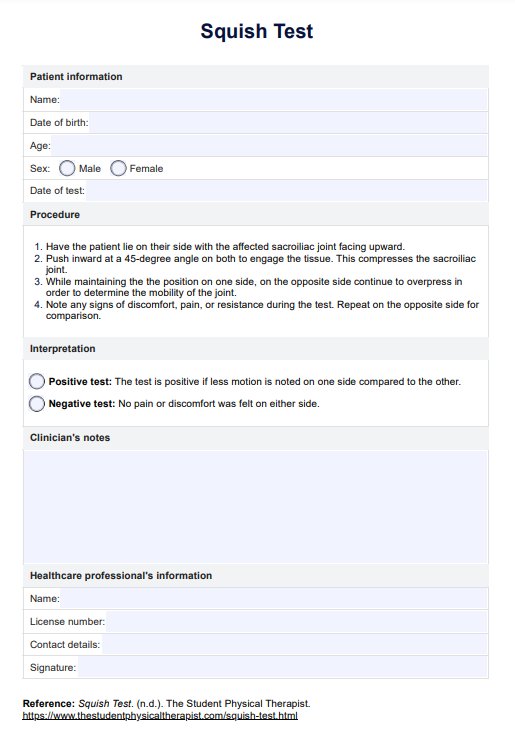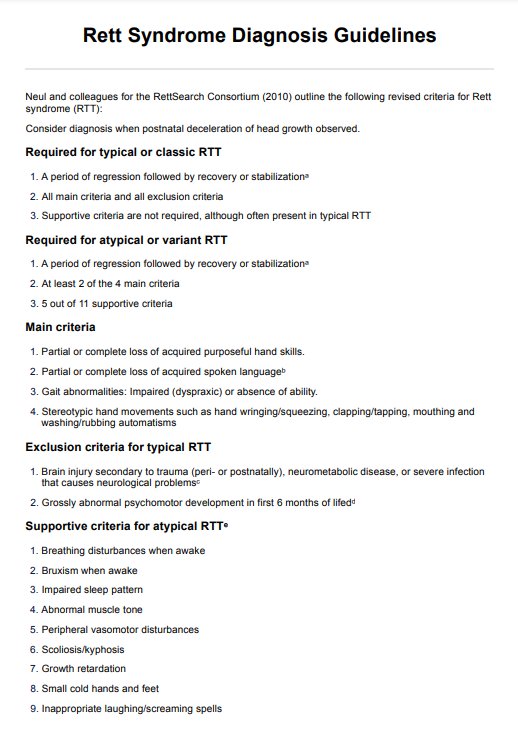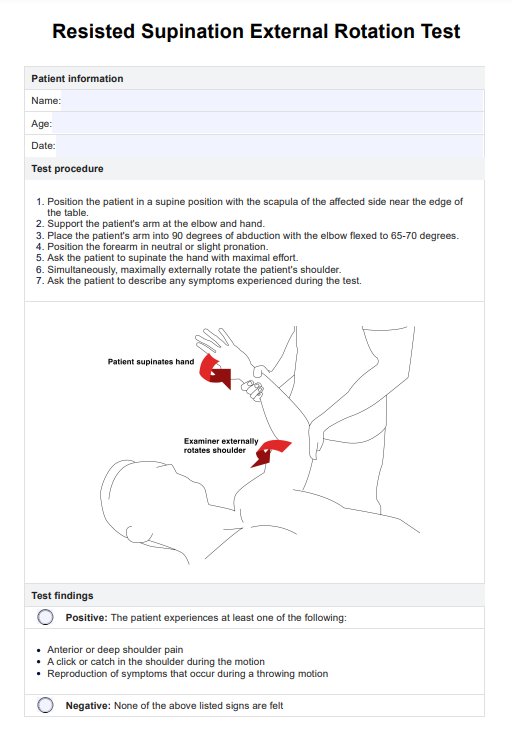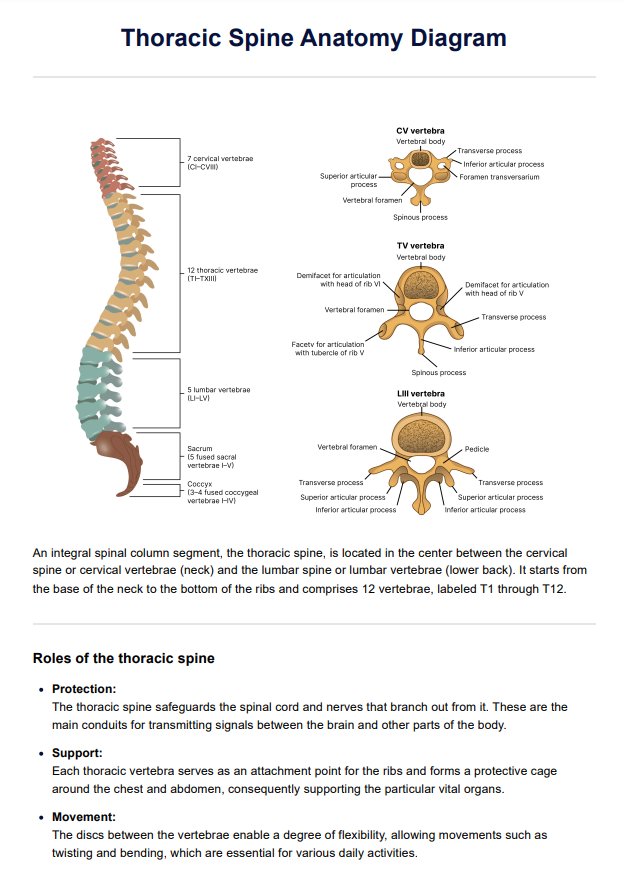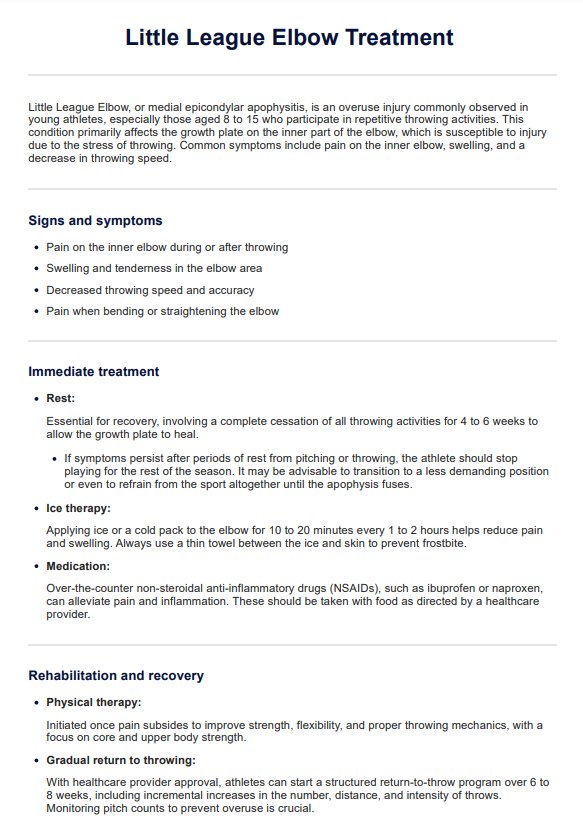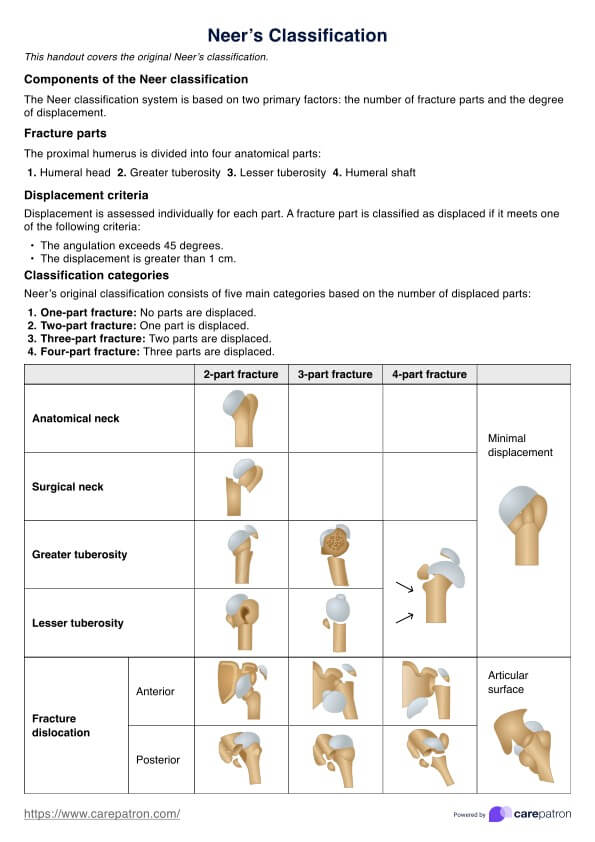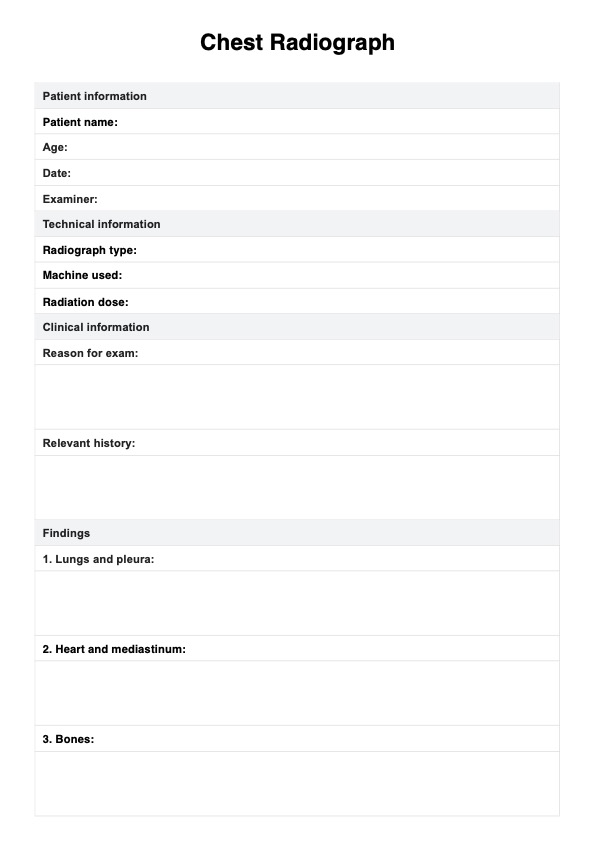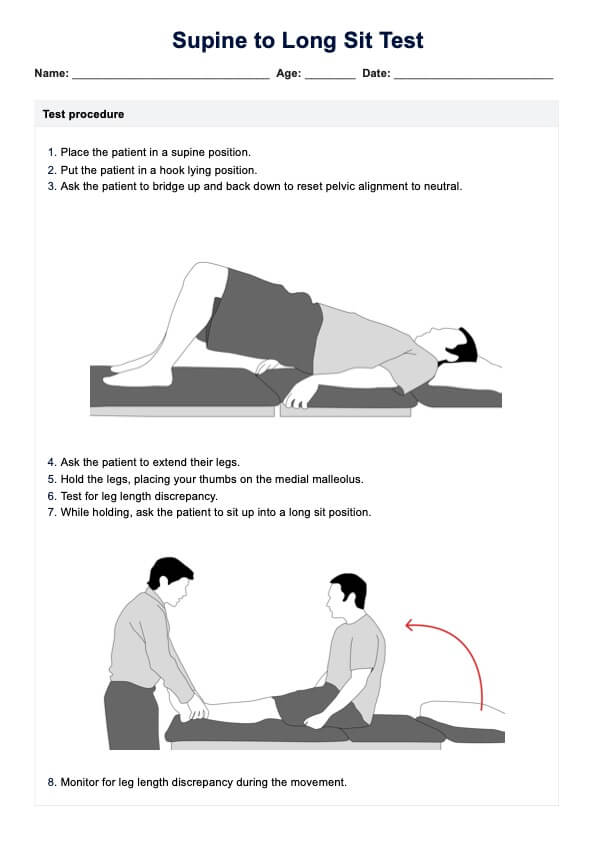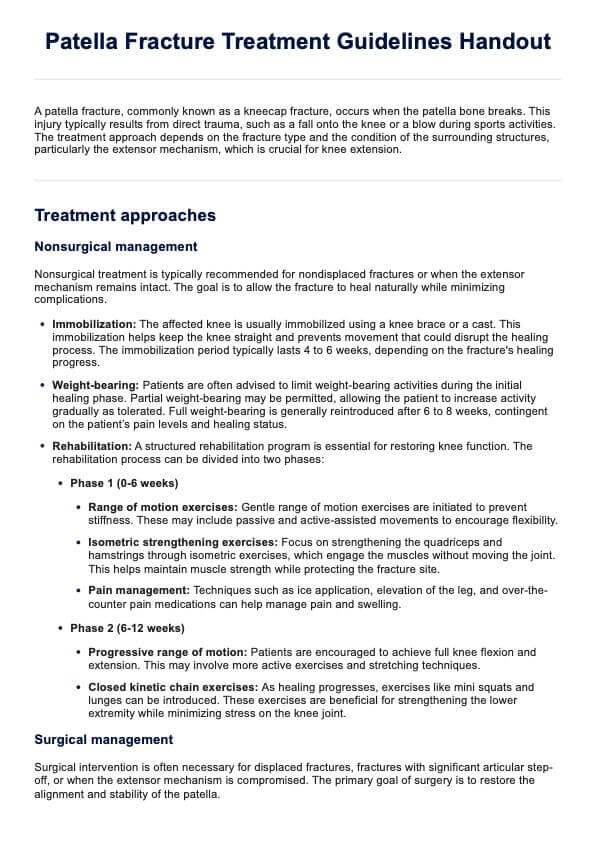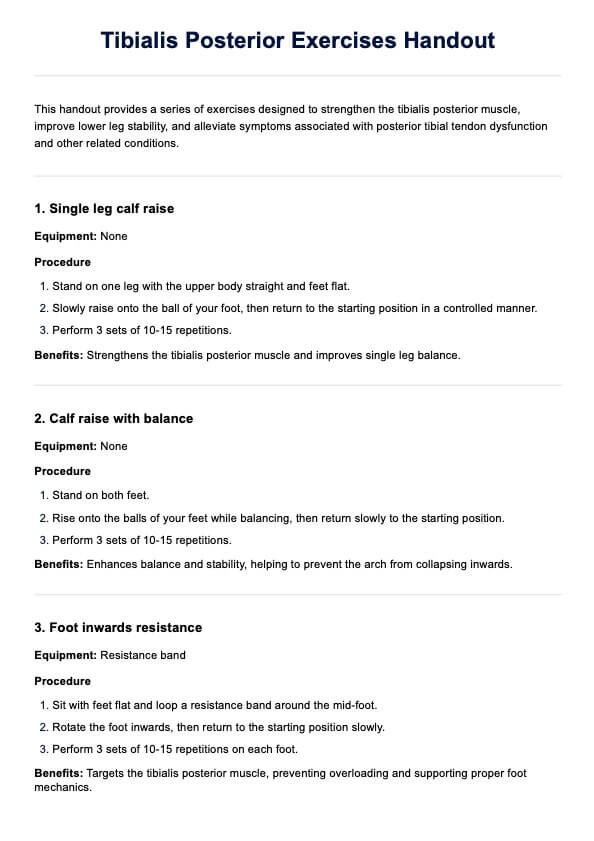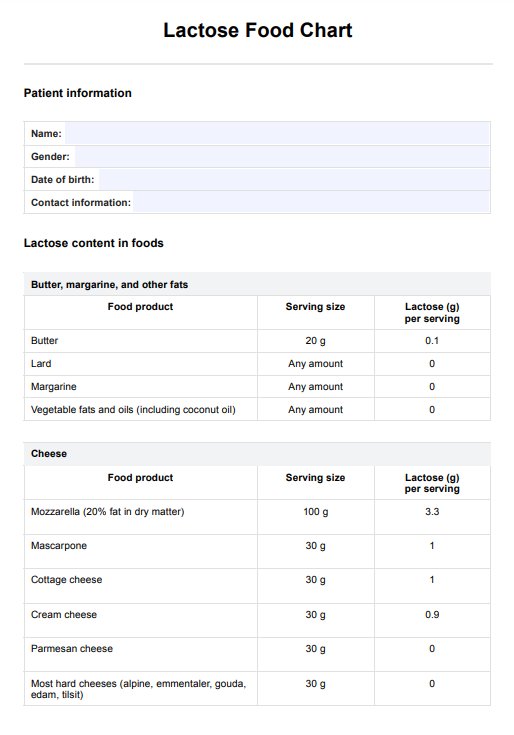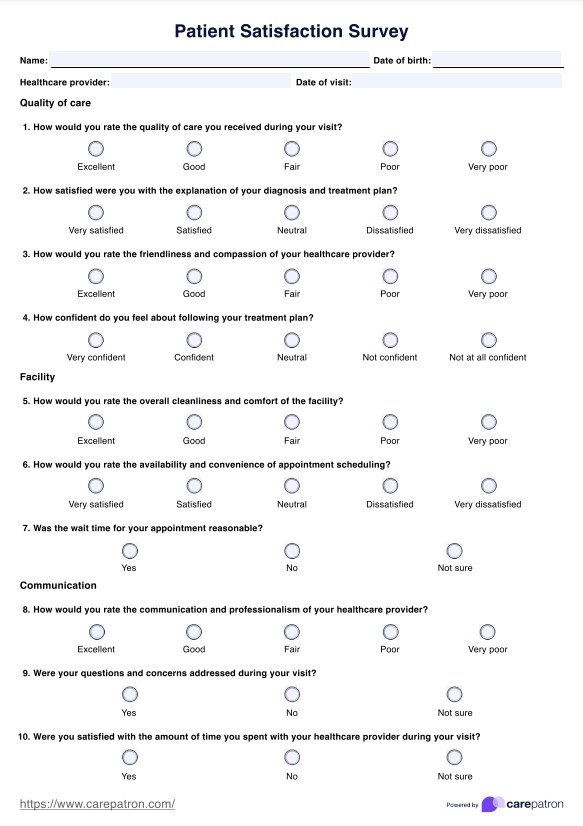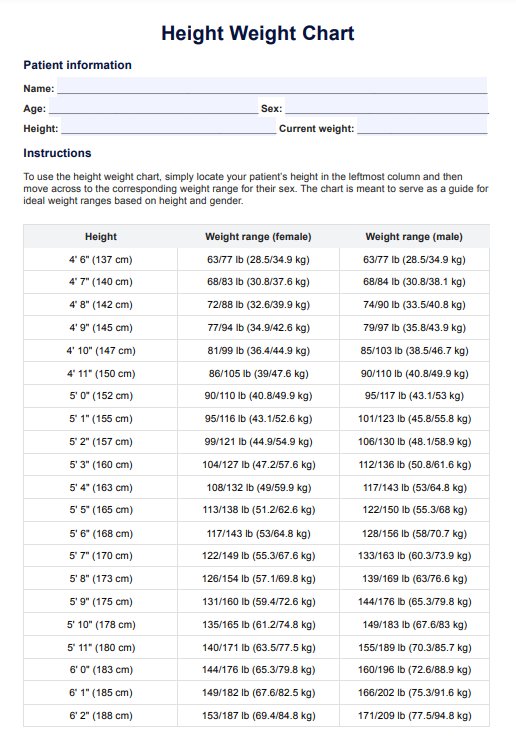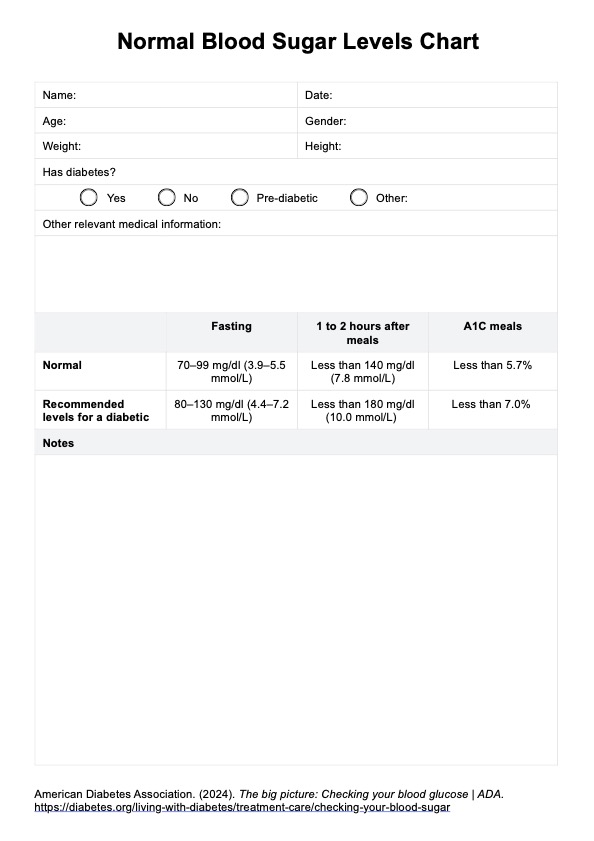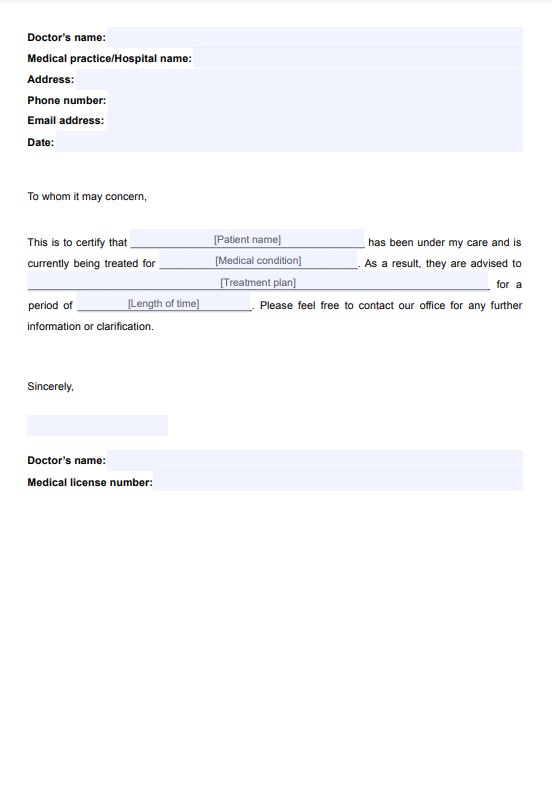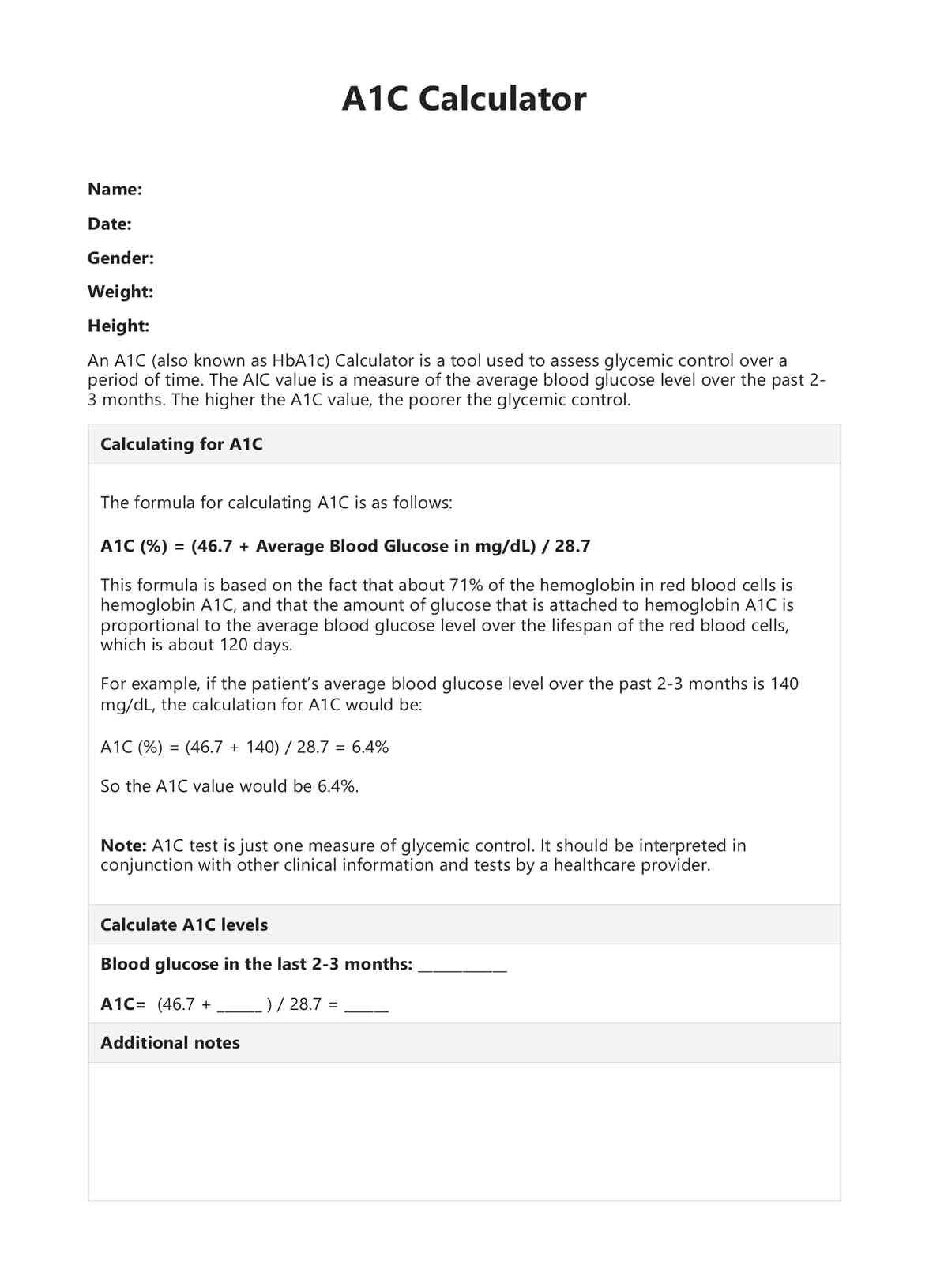Pelvic Exam Documentation Template
Get a free Pelvic Exam Documentation Template to streamline your clinical documentation. Plus, learn the importance of a pelvic exam in this guide.


What is a pelvic exam?
Pelvic examinations may be performed to evaluate specific issues, such as pelvic pain, abnormal vaginal bleeding, vaginal discharge, or vulvovaginal symptoms like itching or irritation. These examinations often include assessing the external genitalia, vaginal walls, and cervix. They may also form part of preventive care, such as screening for cervical cancer with a Pap smear, or be conducted alongside a gynecologic procedure. To ensure patient comfort and understanding, clinicians should explain each step, including procedures like the speculum examination and bimanual assessment, before proceeding. It is strongly recommends having a chaperone present during all pelvic, breast, or rectal exams to maintain professionalism and support (The American College of Obstetricians and Gynecologists, 2024).
Pelvic examinations should be performed only when clinically indicated, based on a woman’s medical history, current symptoms, or specific concerns. Common indications include assessing pelvic organ prolapse, tenderness, or abnormal findings in the pelvis or abdomen. The decision to perform the exam should be made collaboratively between the patient and healthcare provider after discussing its purpose and benefits. For patients who decline a pelvic exam, alternative options—such as a self-collected swab for sexually transmitted infection screening—should be offered, particularly for sexually active individuals under 25 years old.
To aid in accurate and thorough assessments, we have developed a Pelvic Exam Documentation Template for healthcare professionals. This template systematically helps in recording all relevant findings, including the patient’s history, general appearance, and results from procedures like the speculum exam. It ensures high standards of care by capturing essential details such as the presence or absence of tenderness, discharge, or abnormalities, enabling effective communication within the healthcare team.
Pelvic Exam Documentation Template
Pelvic Exam Documentation Template Example
How to use our free Pelvic Exam Documentation Template?
Carepatron has designed a detailed and user-friendly Pelvic Exam Documentation Template to simplify the examination process and enhance clinical documentation. Follow these steps to use the template effectively:
Step 1: Access the template
Download the template by clicking the “Use template” or “Download” button provided in this guide. Alternatively, you can find it by searching for “Pelvic Exam Documentation Template” in Carepatron’s template library, accessible through the website or app.
Step 2: Prepare for the examination
Before starting the pelvic exam, complete the patient information fields in the template, including the patient’s name, date of birth, and the appointment details. Ensure the consent section is reviewed with the patient and signed. This ensures informed consent is obtained prior to proceeding with the examination.
Step 3: Conduct the exam and document findings
Use the structured sections of the template to guide your assessment. Document the patient’s medical and gynecological history, followed by detailed observations and findings during each step of the examination, including external inspection, speculum examination, and bimanual examination. The template provides clear prompts to help you capture all relevant details, such as abnormalities, test results, and additional observations.
Step 4: Record test results and interpretations
If diagnostic tests, such as a Pap smear or HPV test, are performed during the examination, document these in the appropriate fields. Note any abnormal findings and their clinical interpretations in detail to ensure comprehensive documentation.
Step 5: Save the completed template securely
After completing the documentation, ensure the template is stored securely. Carepatron’s digital platform allows for safe and efficient storage within the patient’s electronic medical record. If using a paper version, file it in a secure and confidential location to maintain compliance with privacy regulations.
Benefits of using our Pelvic Exam Documentation Template
A Pelvic Exam Documentation Template provides healthcare professionals with a structured approach to conducting and recording evaluations, ensuring thoroughness and improving patient care. It simplifies the process while promoting accuracy and efficiency in clinical practice.
Comprehensive and streamlined assessments
The template organizes the pelvic examination into clear sections, guiding you through each step, from external inspection to speculum and bimanual examinations. It ensures all critical areas, such as the cervix, vaginal walls, and uterus, are assessed and documented systematically, leaving no detail overlooked.
Enhanced diagnostic clarity
By documenting key observations, such as abnormal discharge, tenderness, or structural changes, the template supports the identification of conditions like cervical cancer or infections. It also helps track findings over time, contributing to a more accurate diagnosis and treatment plan.
Improved patient care
A well-structured template enables you to address patient history and symptoms holistically. It integrates findings from the pelvic exam with other relevant health concerns, such as abdominal discomfort or bladder issues, to provide a comprehensive picture of the patient’s overall health.
Efficient documentation
With its clear layout, the template saves time by reducing errors and omissions during documentation. You can easily record both normal findings and abnormalities, streamlining their workflow without compromising the quality of care.
Reference
The American College of Obstetricians and Gynecologists . (2024, May). Pelvic exams. https://www.acog.org/womens-health/faqs/pelvic-exams
Commonly asked questions
A Pelvic Exam Documentation Template is a structured tool designed to guide healthcare professionals in recording the findings of a pelvic examination. It ensures all aspects of the assessment, from the evaluation of the external genitalia to laboratory examinations like Pap smears, are systematically documented.This document aligns with established clinical methods, promoting accuracy, thoroughness, and high-quality patient care.
A pelvic examination is performed to assess symptoms such as pelvic pain, abnormal discharge, or changes in the vaginal walls. It may also be part of routine preventive care, such as screening for cervical cancer or sexually transmitted infections, or to evaluate specific conditions like pelvic organ prolapse.
Cervical motion tenderness refers to pain elicited when the cervix is gently moved away from its normal position during a bimanual examination. It can indicate underlying issues such as pelvic inflammatory disease or other gynecologic conditions, making it a critical part of a complete exam for female patients.
In addition to a speculum exam and bimanual examination, a comprehensive physical examination may include evaluating the patient’s general appearance, measuring blood pressure, and noting findings deep tendon reflexes, normal tone, nipple discharge, or abnormalities in the oral mucosa. These observations contribute to a holistic understanding of the patient’s health.



